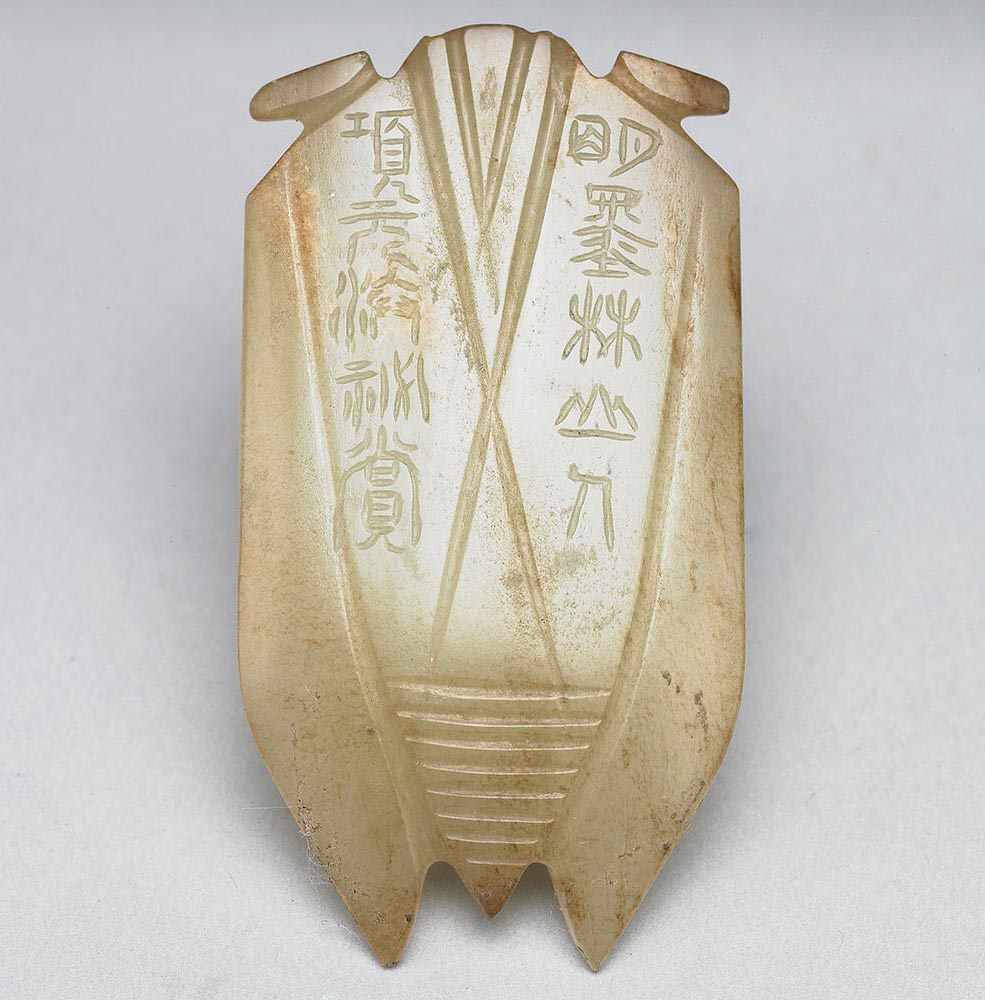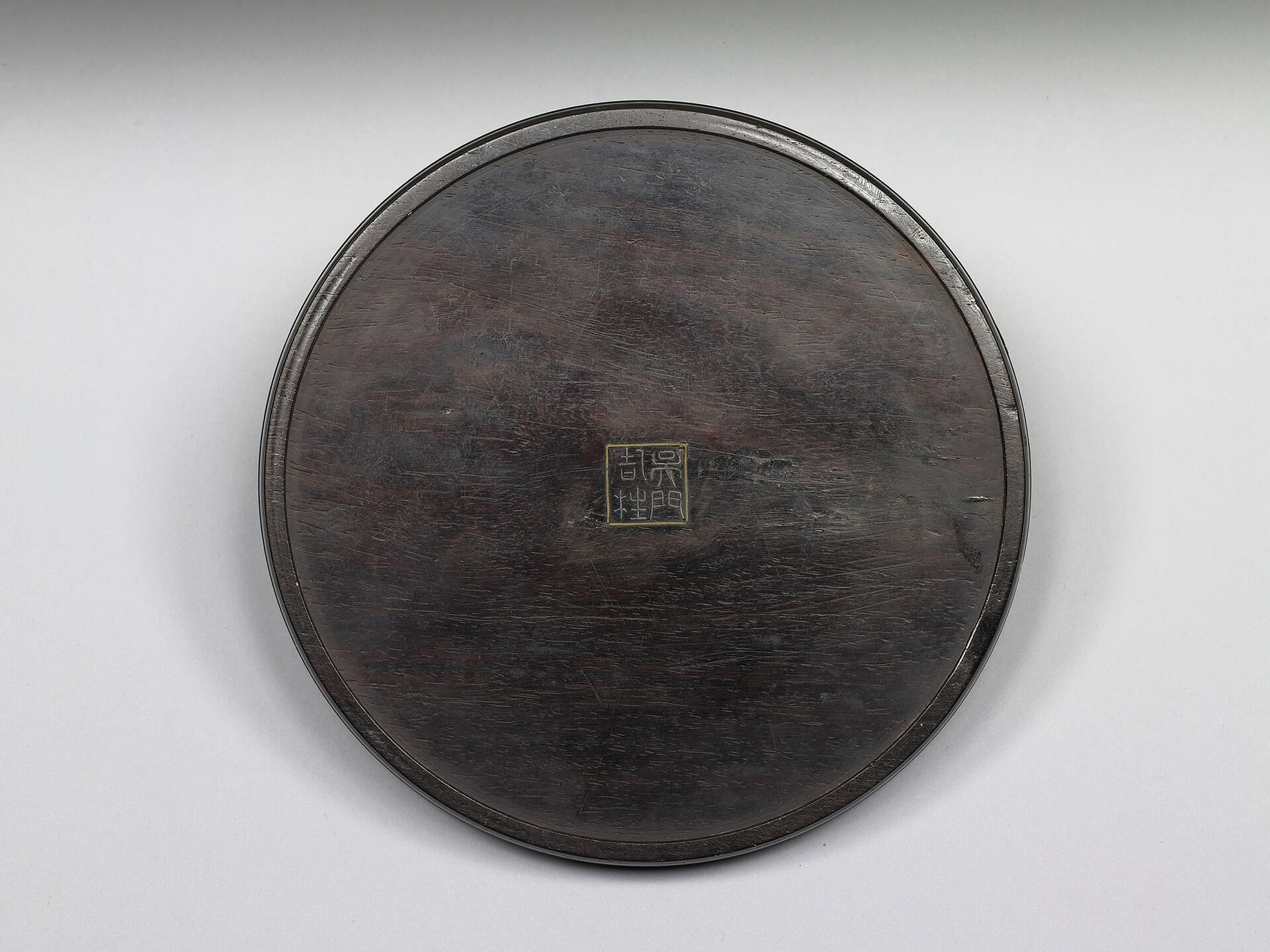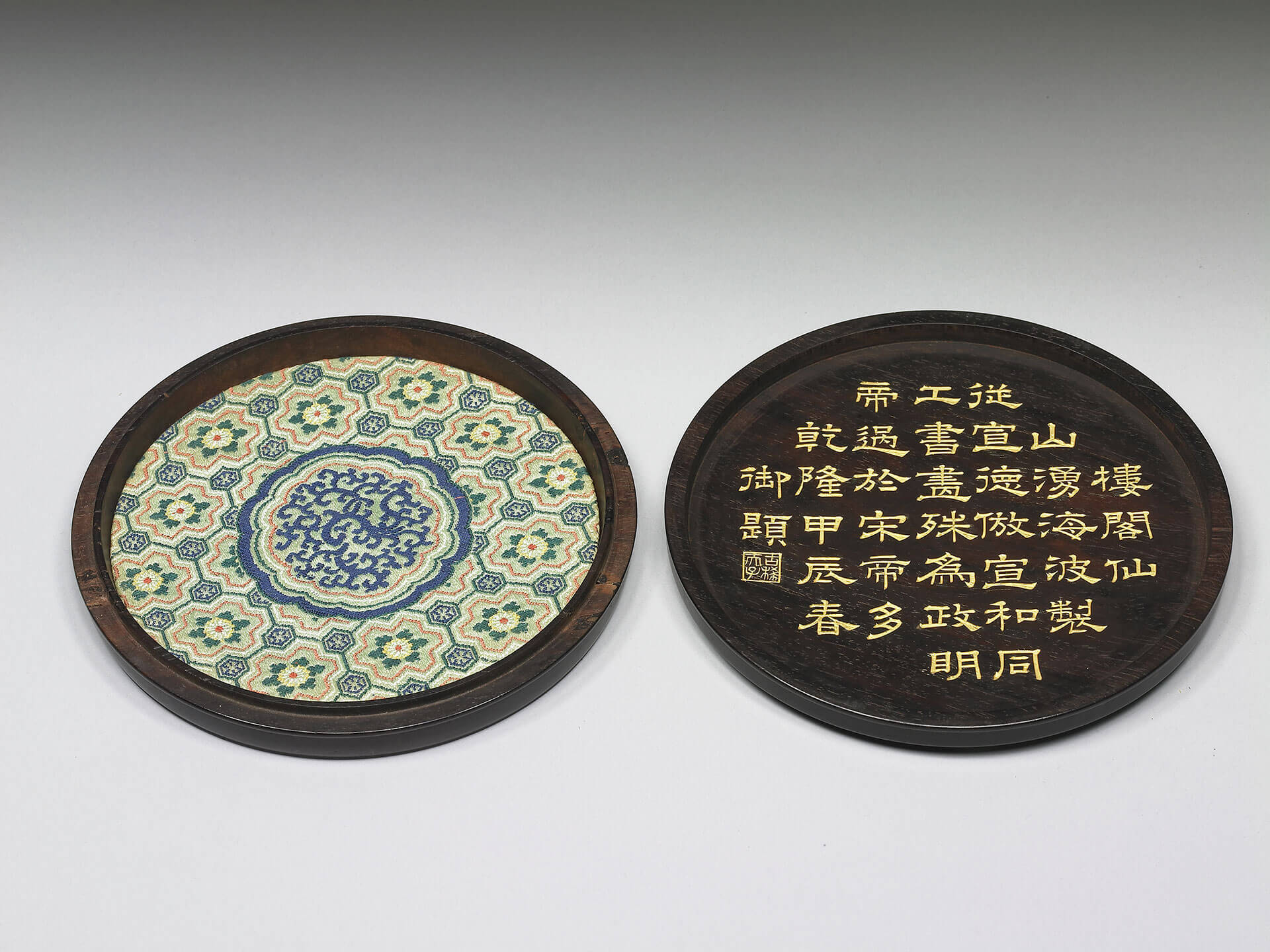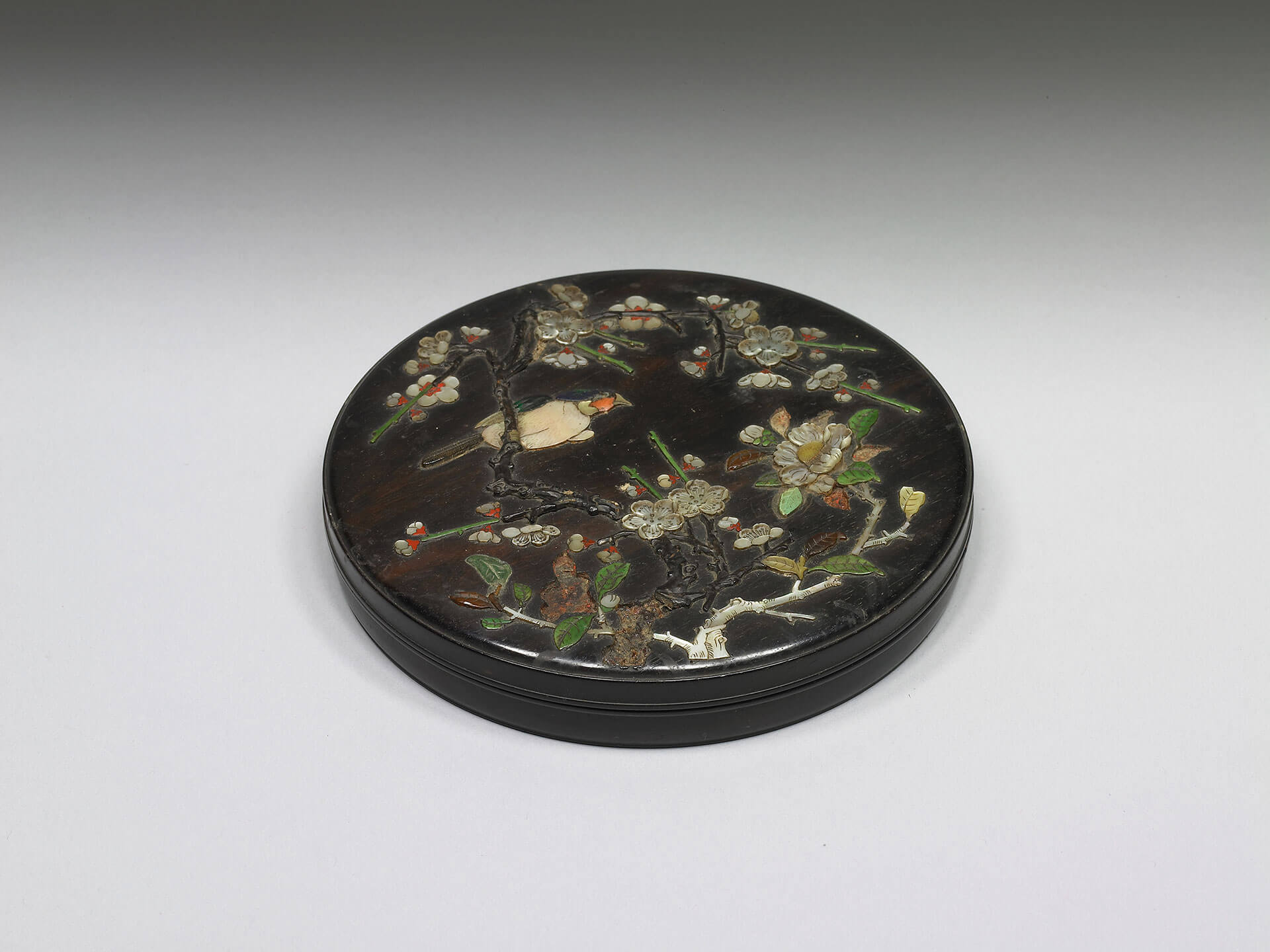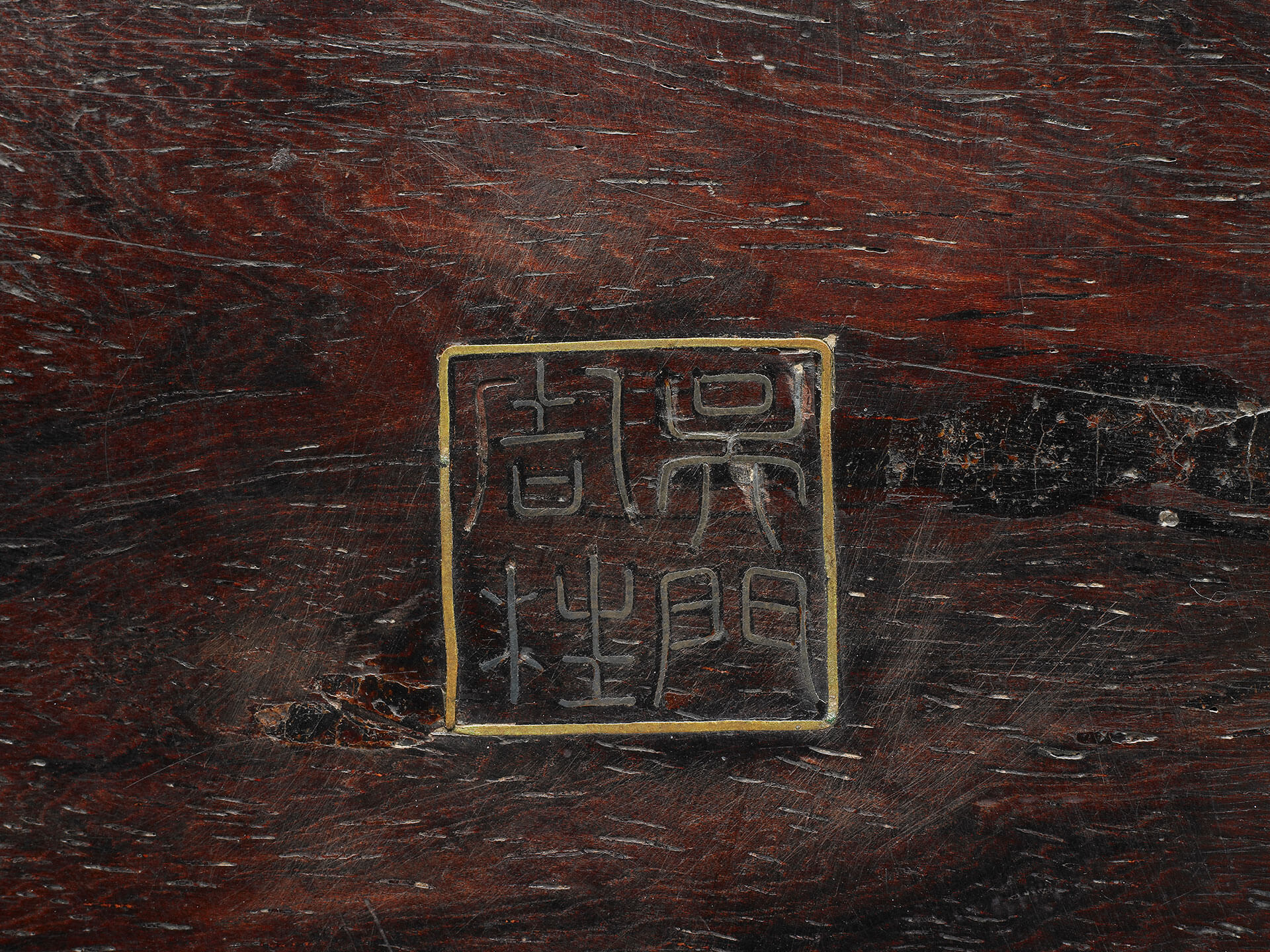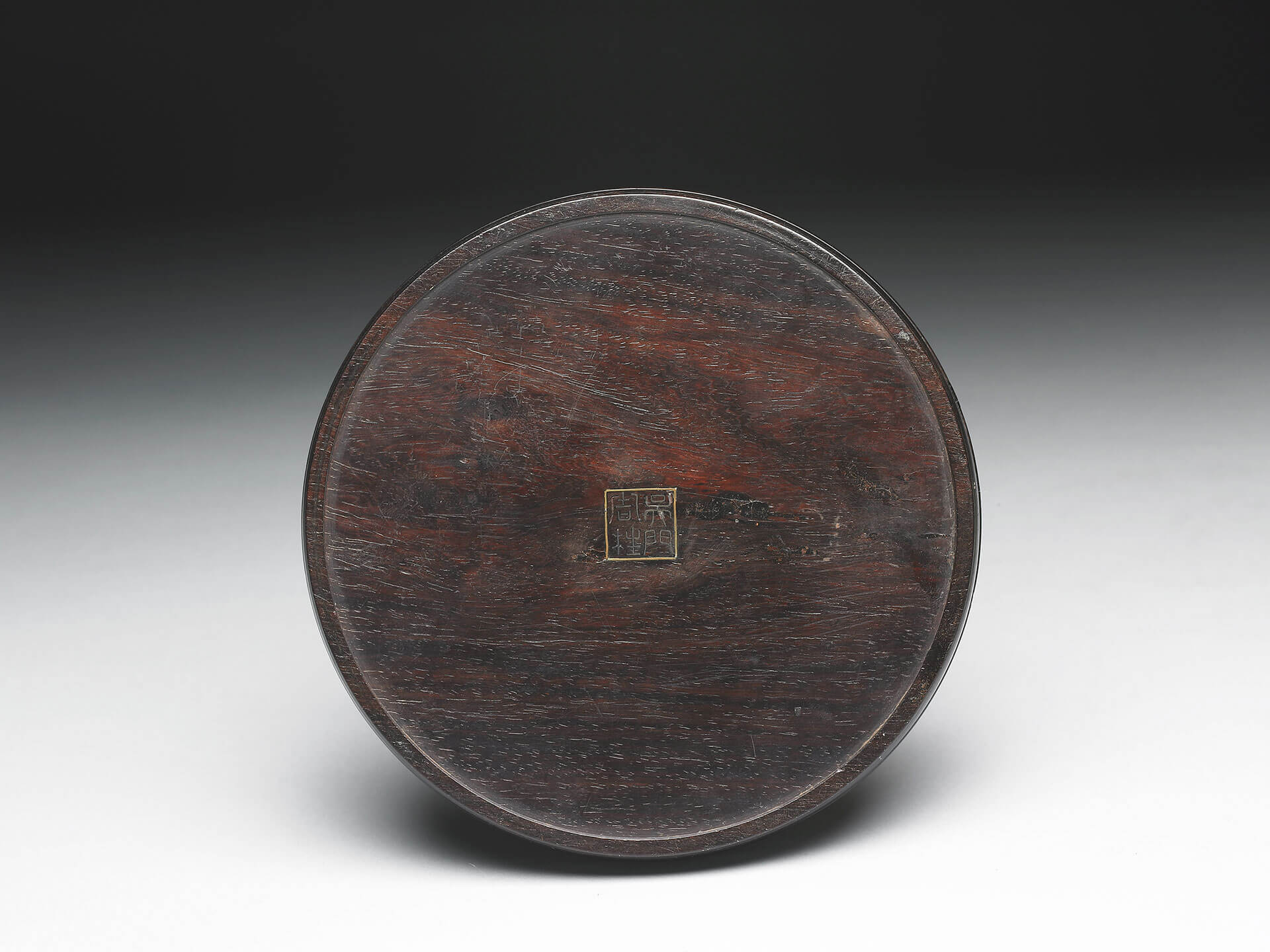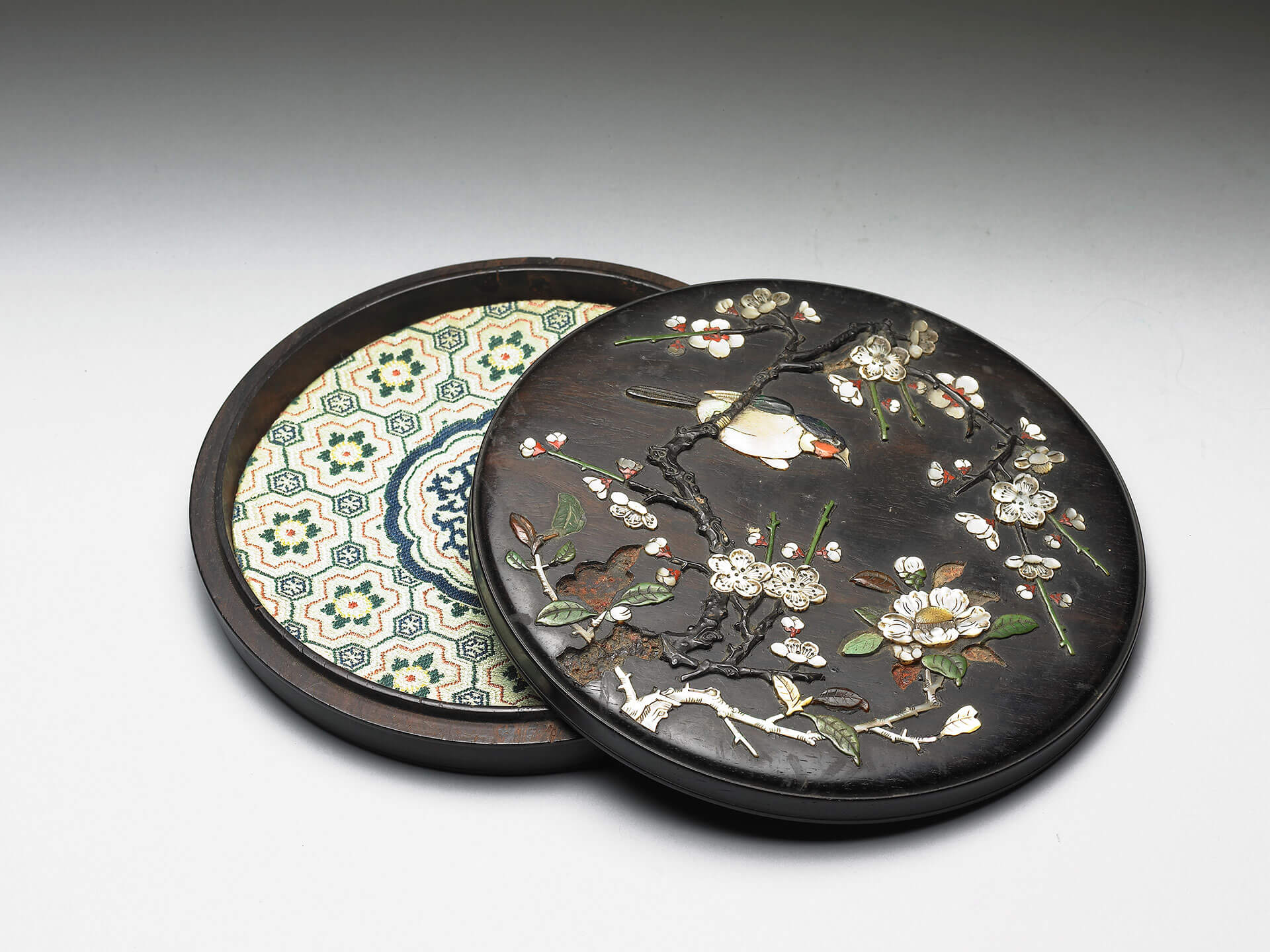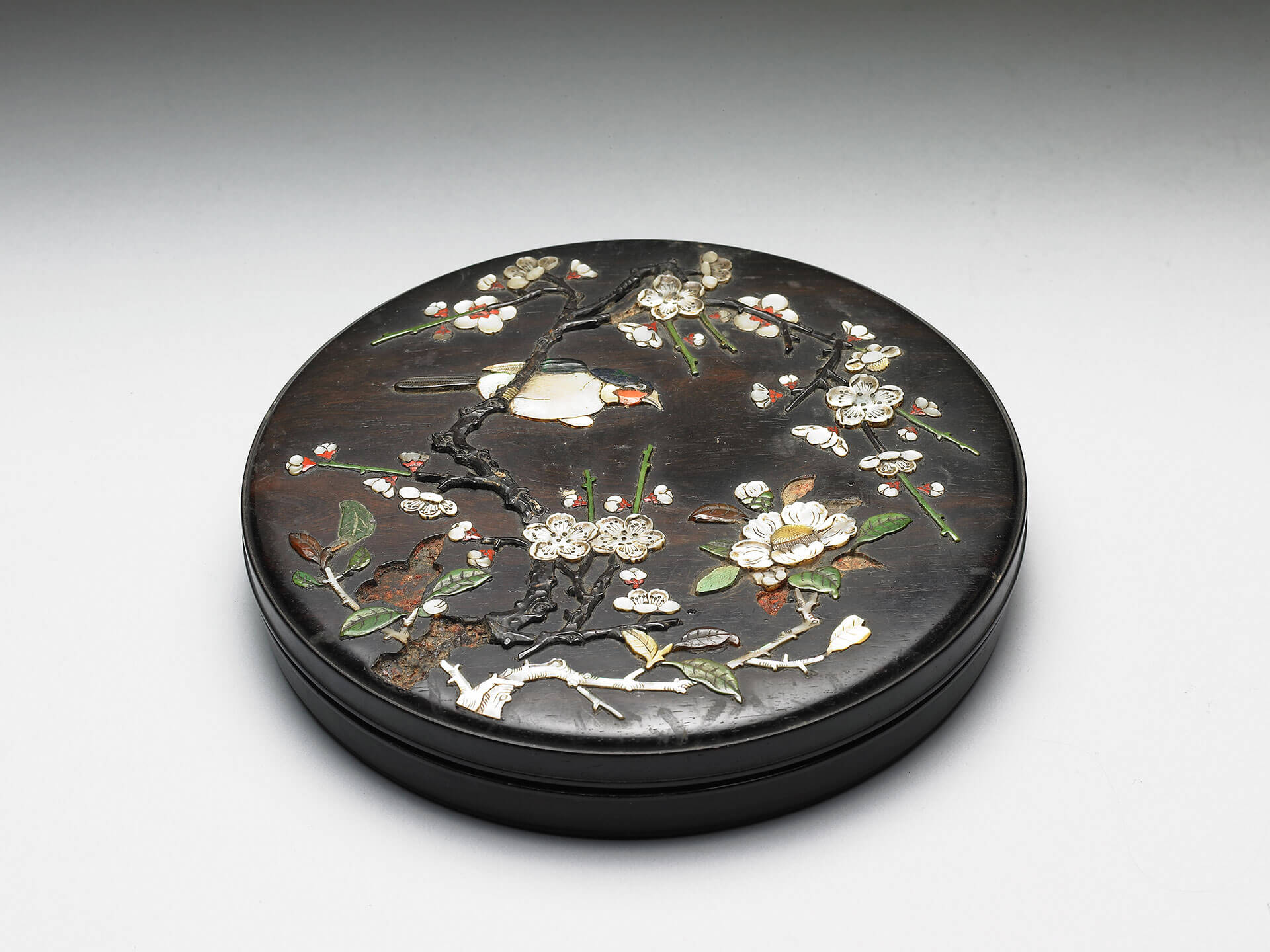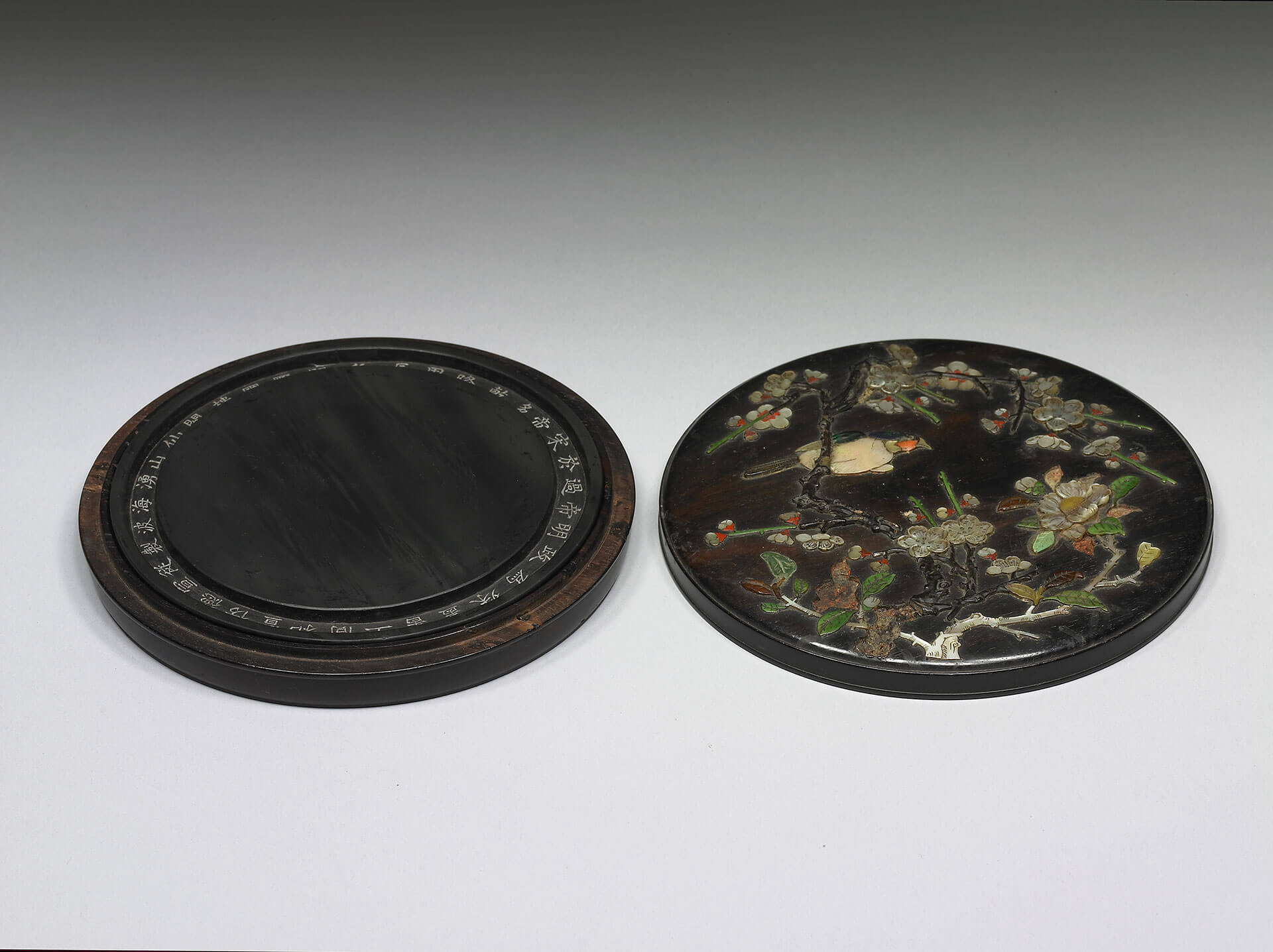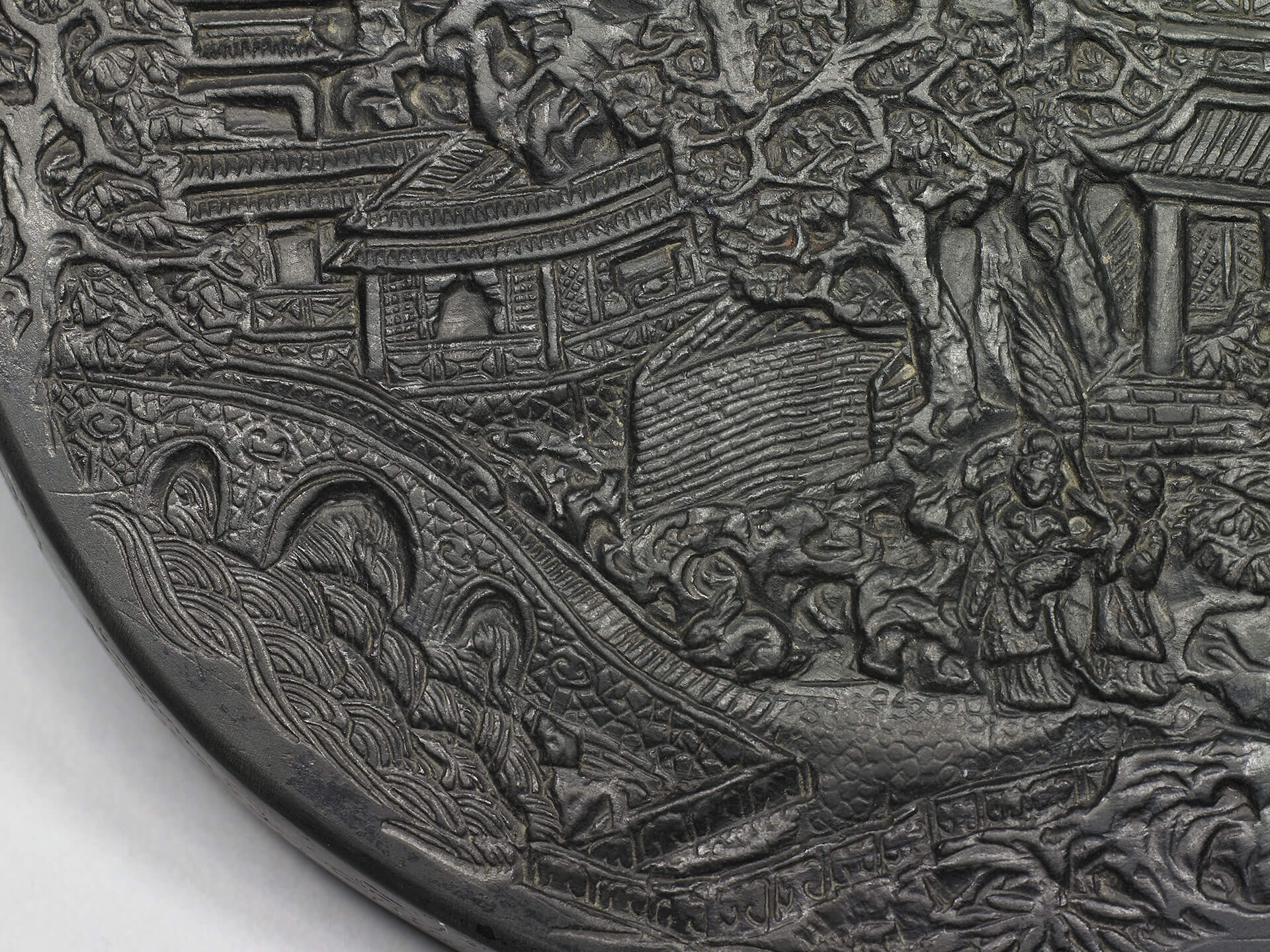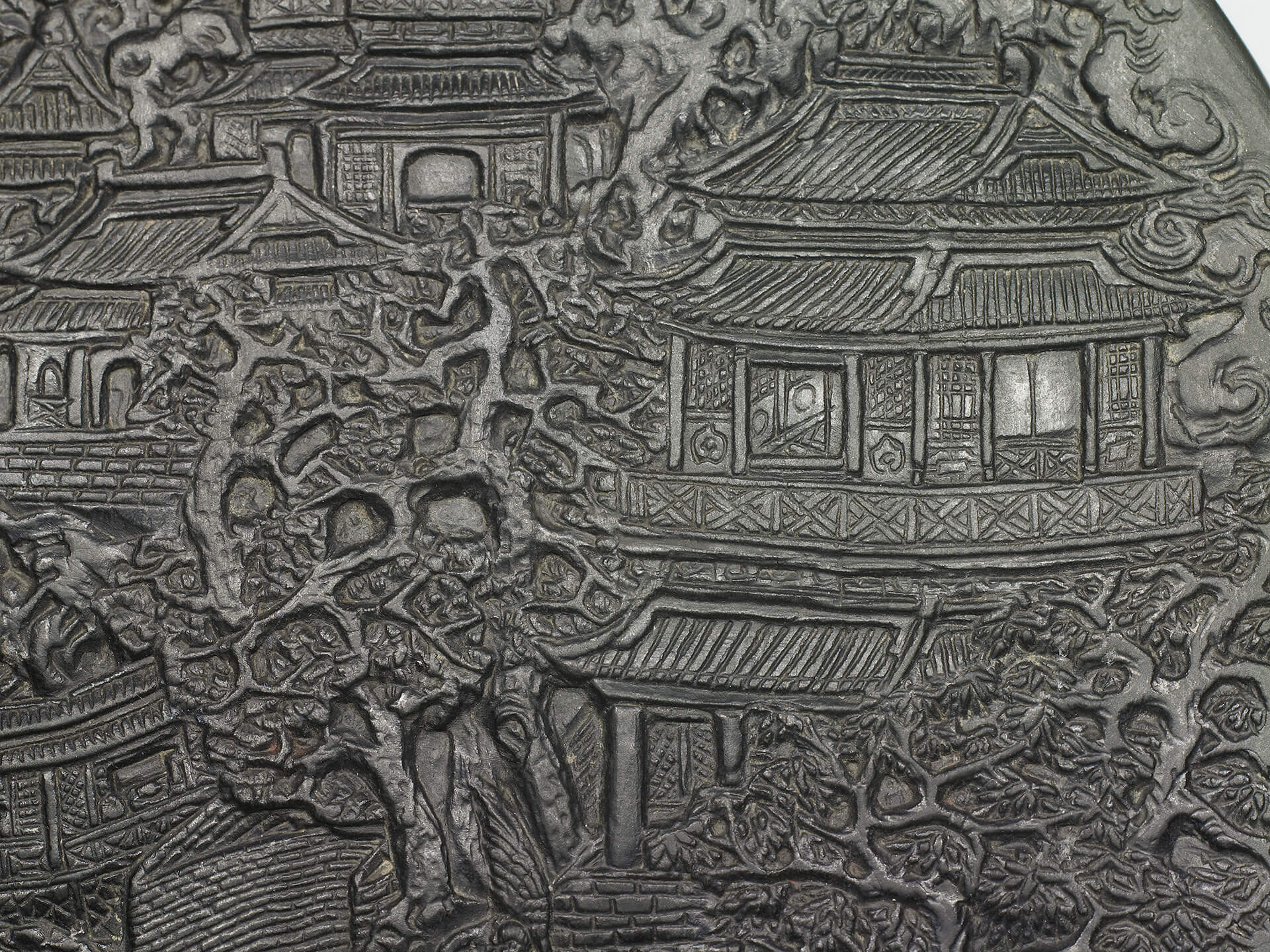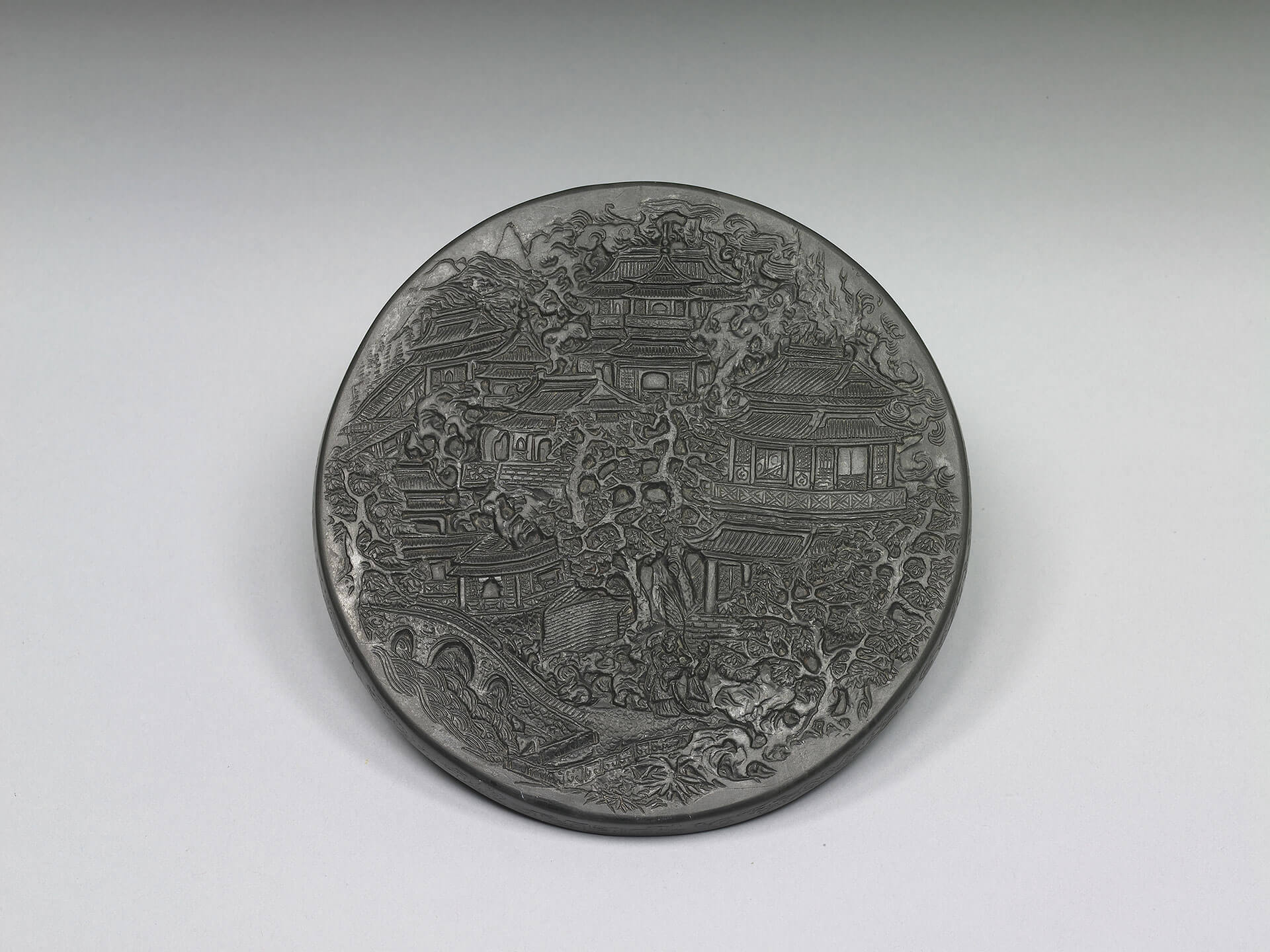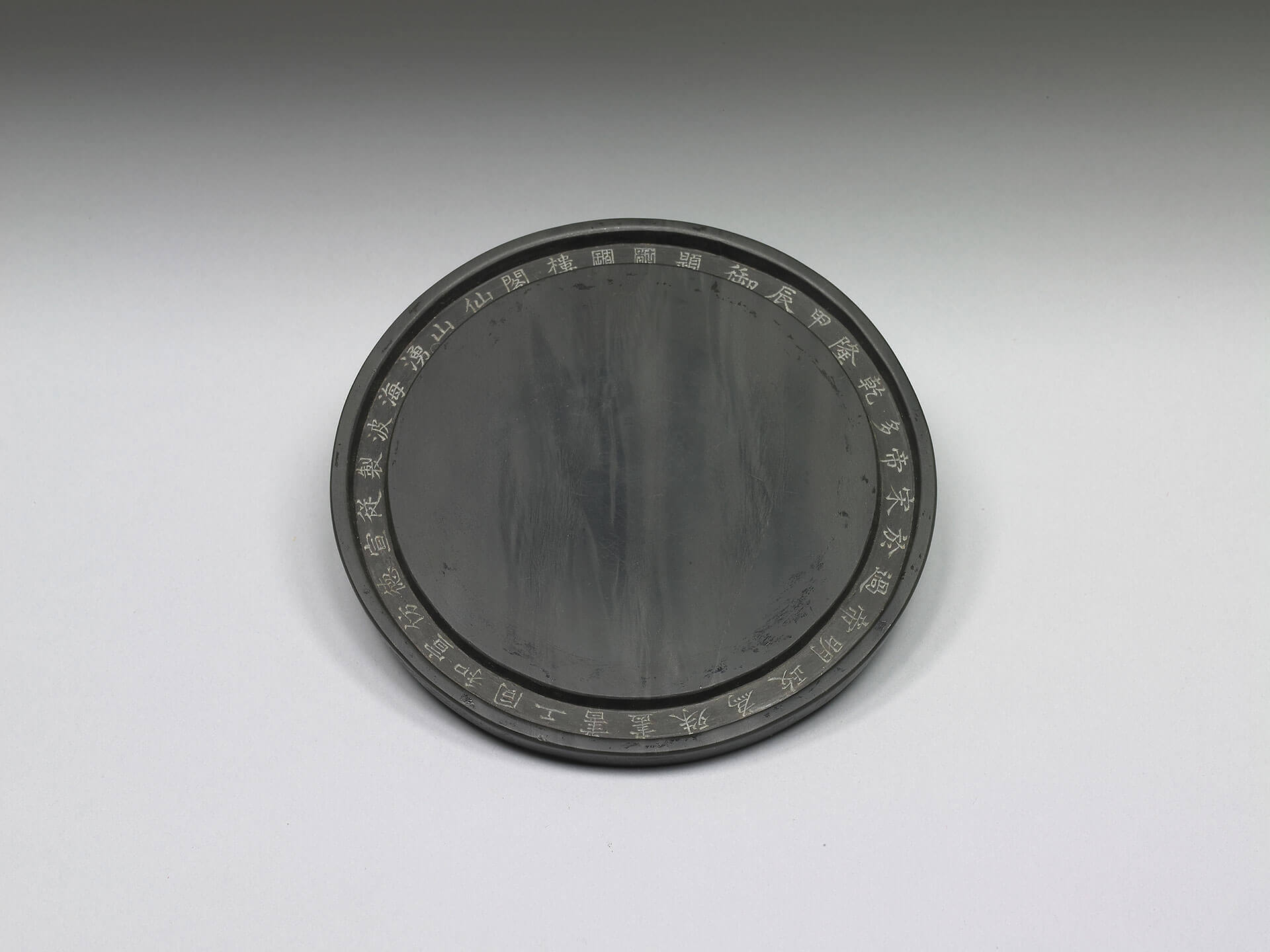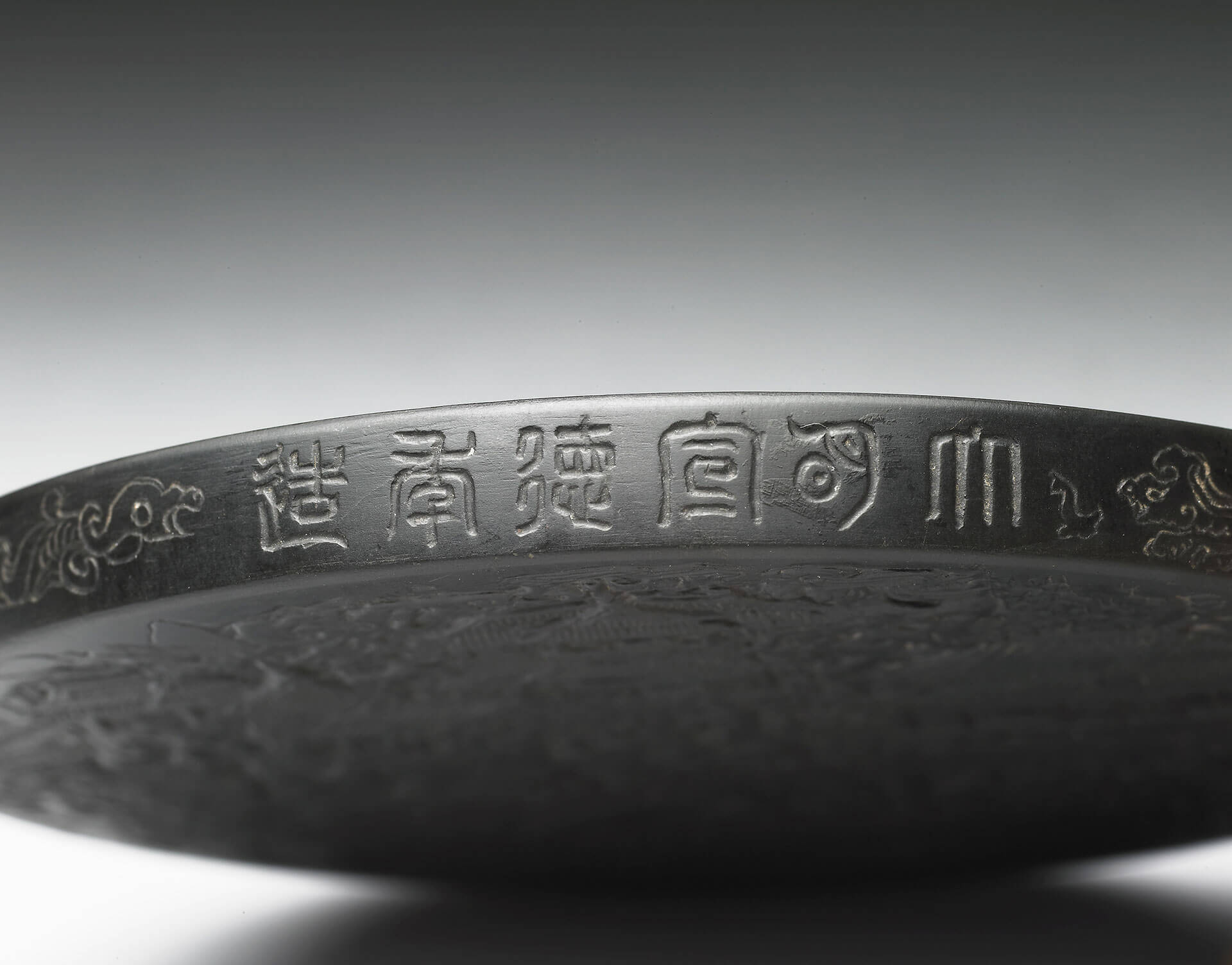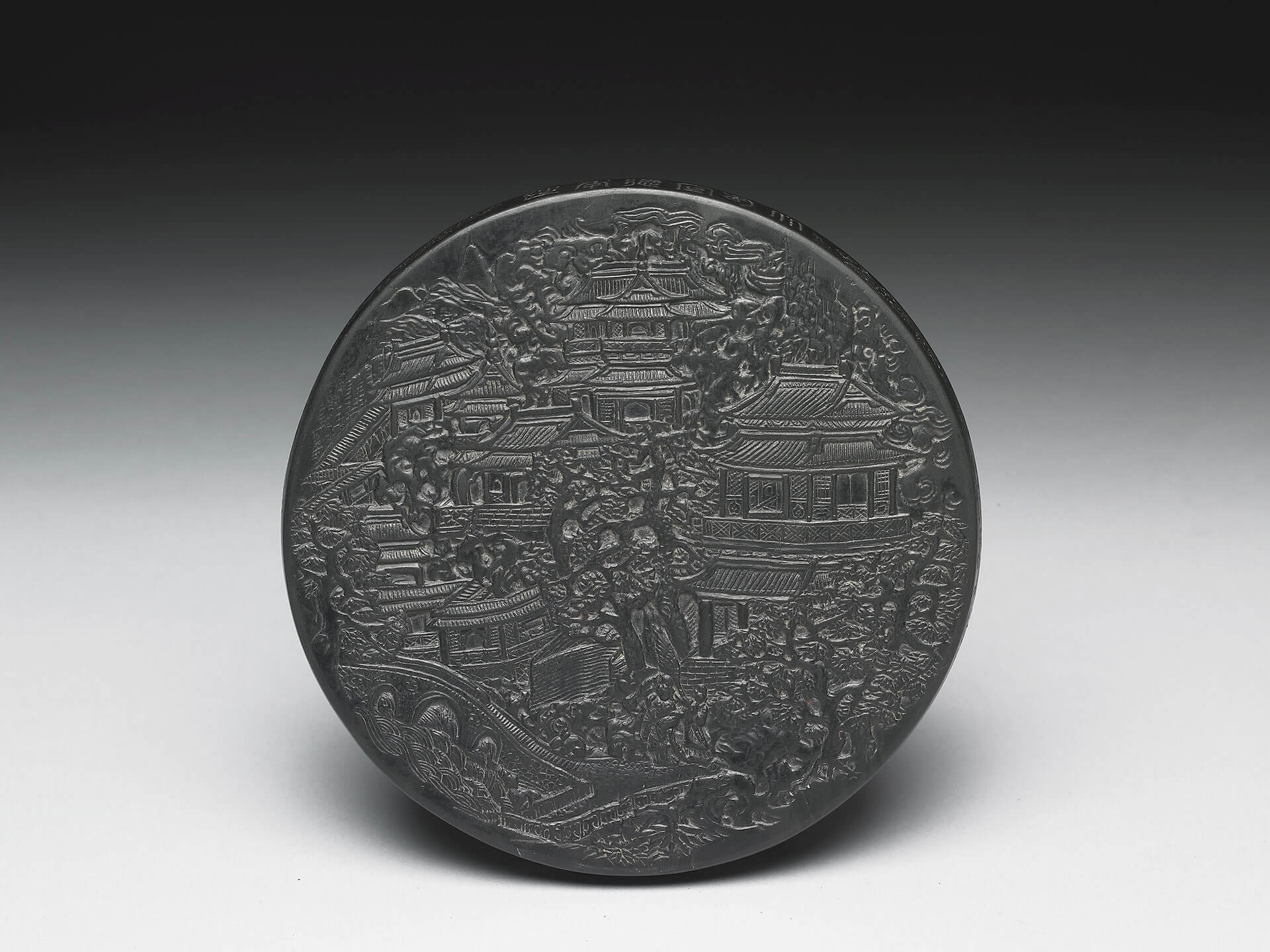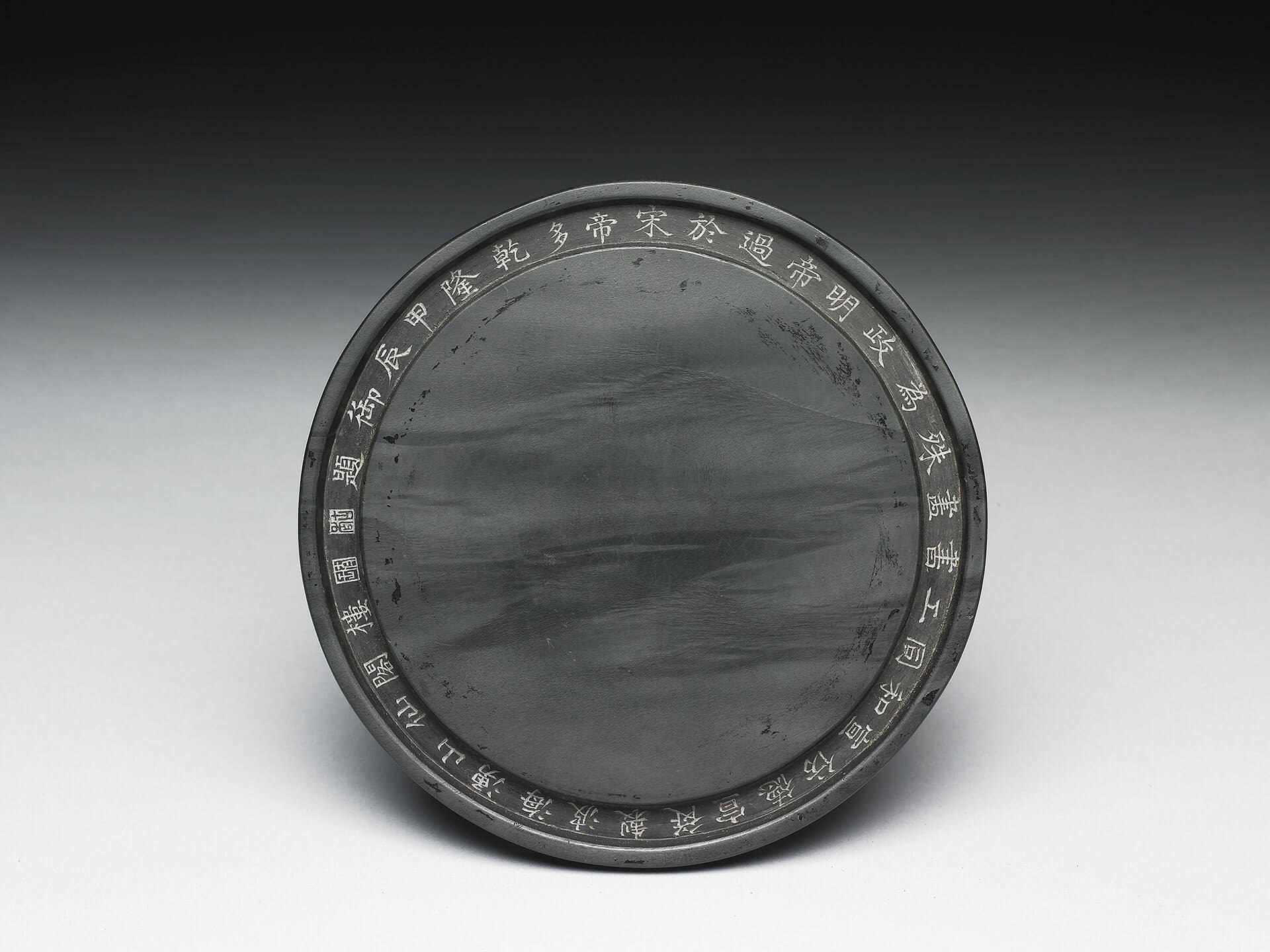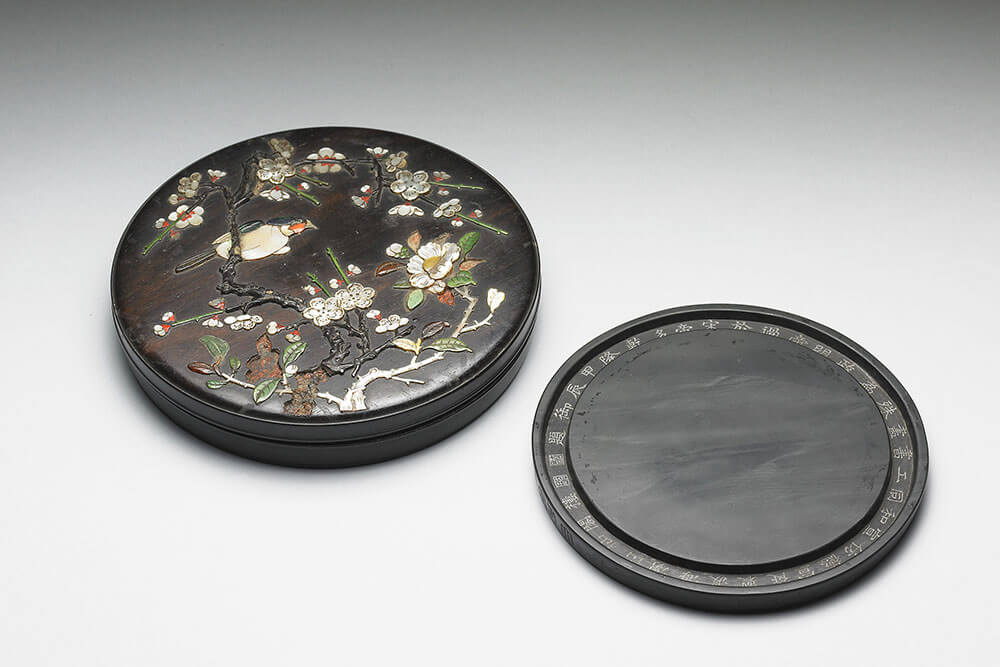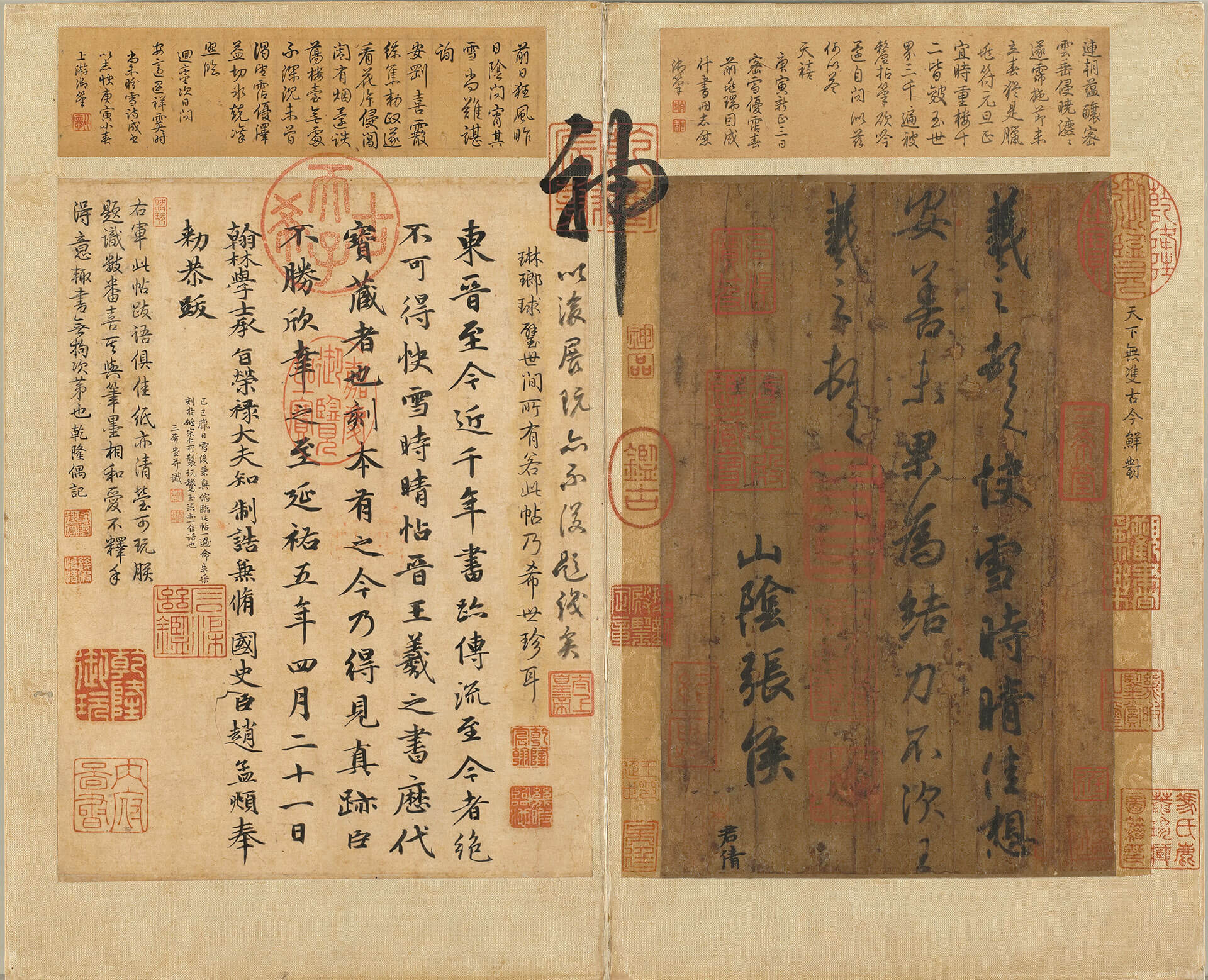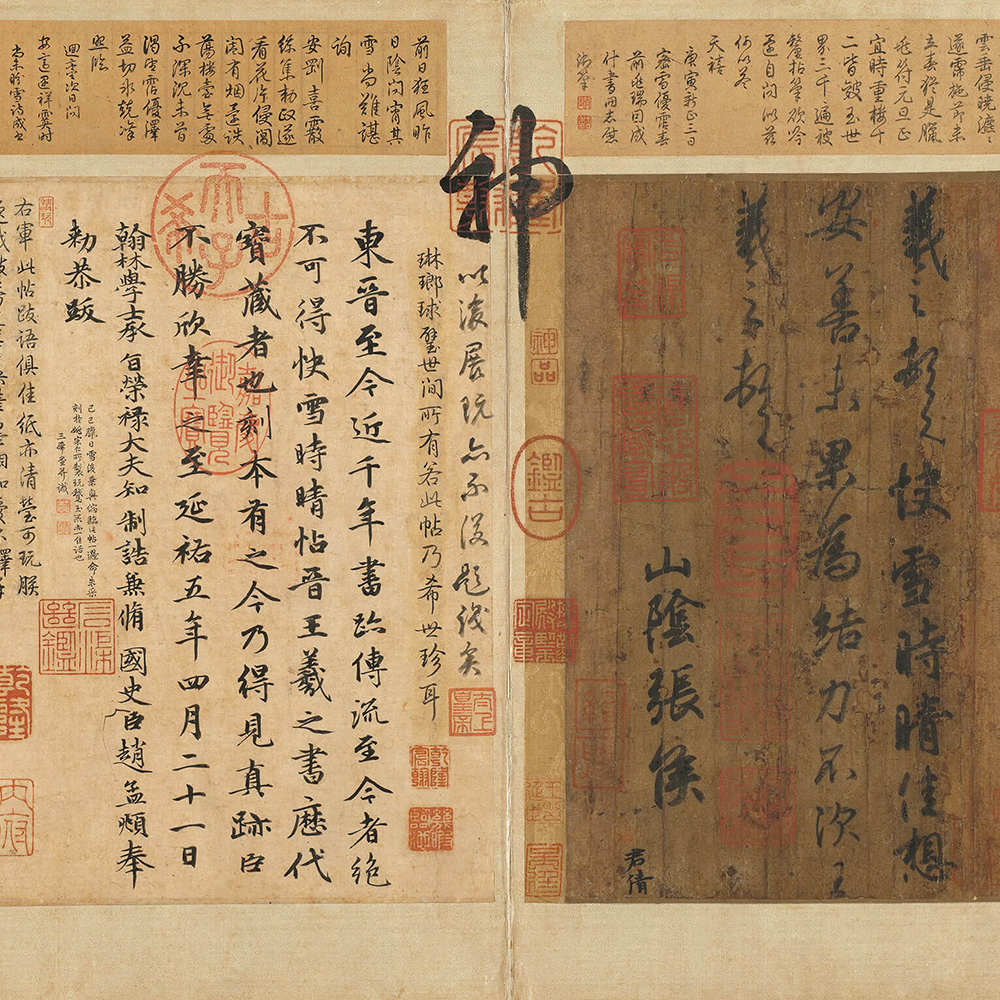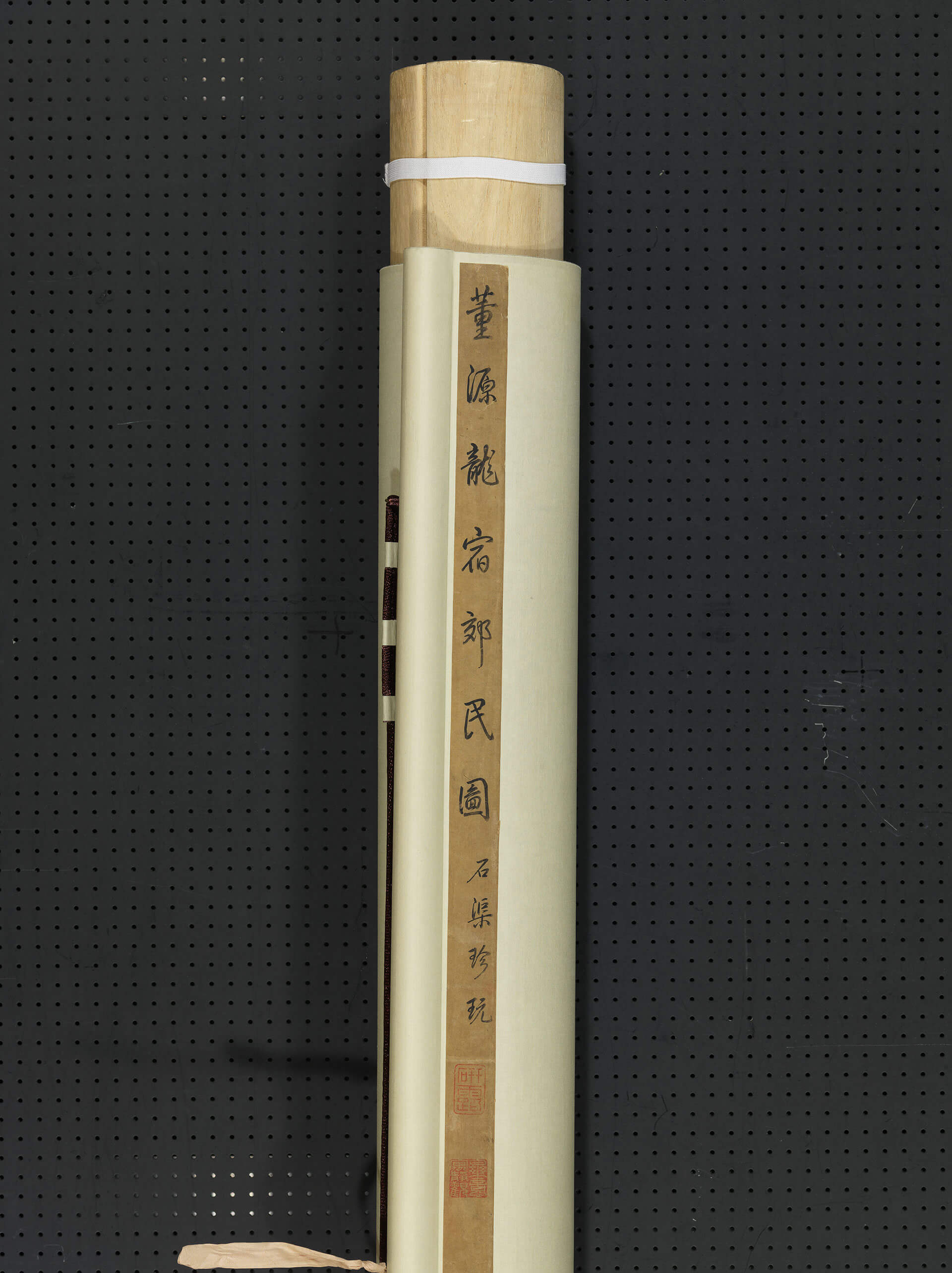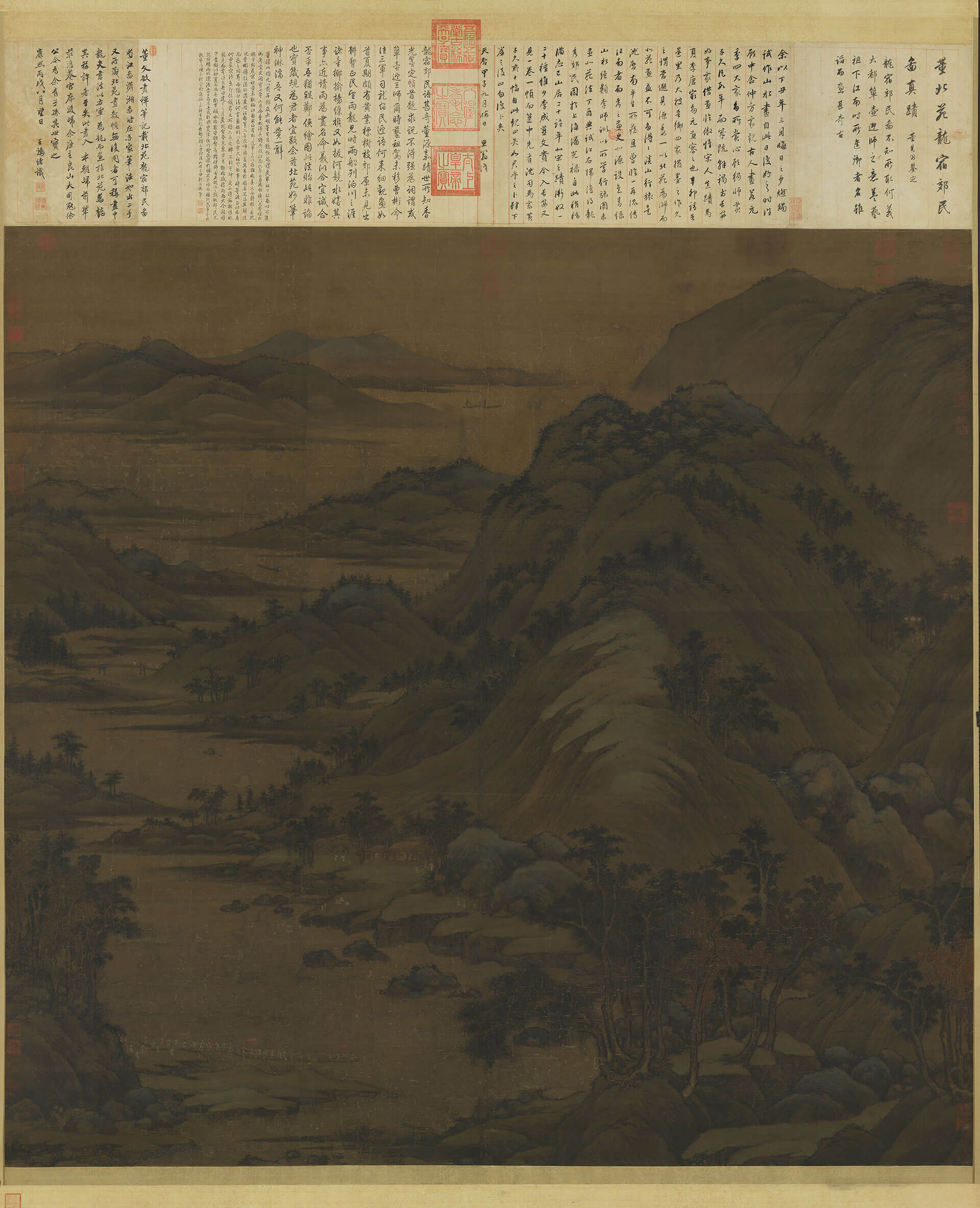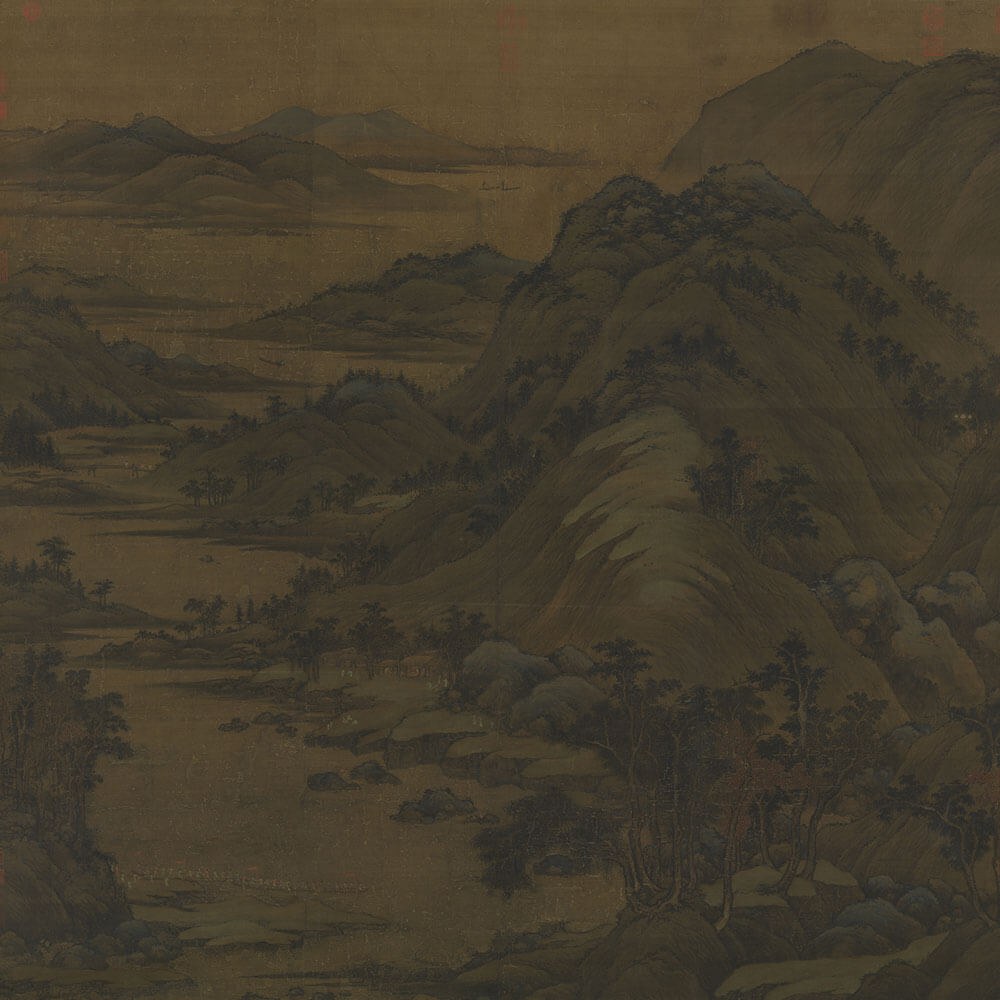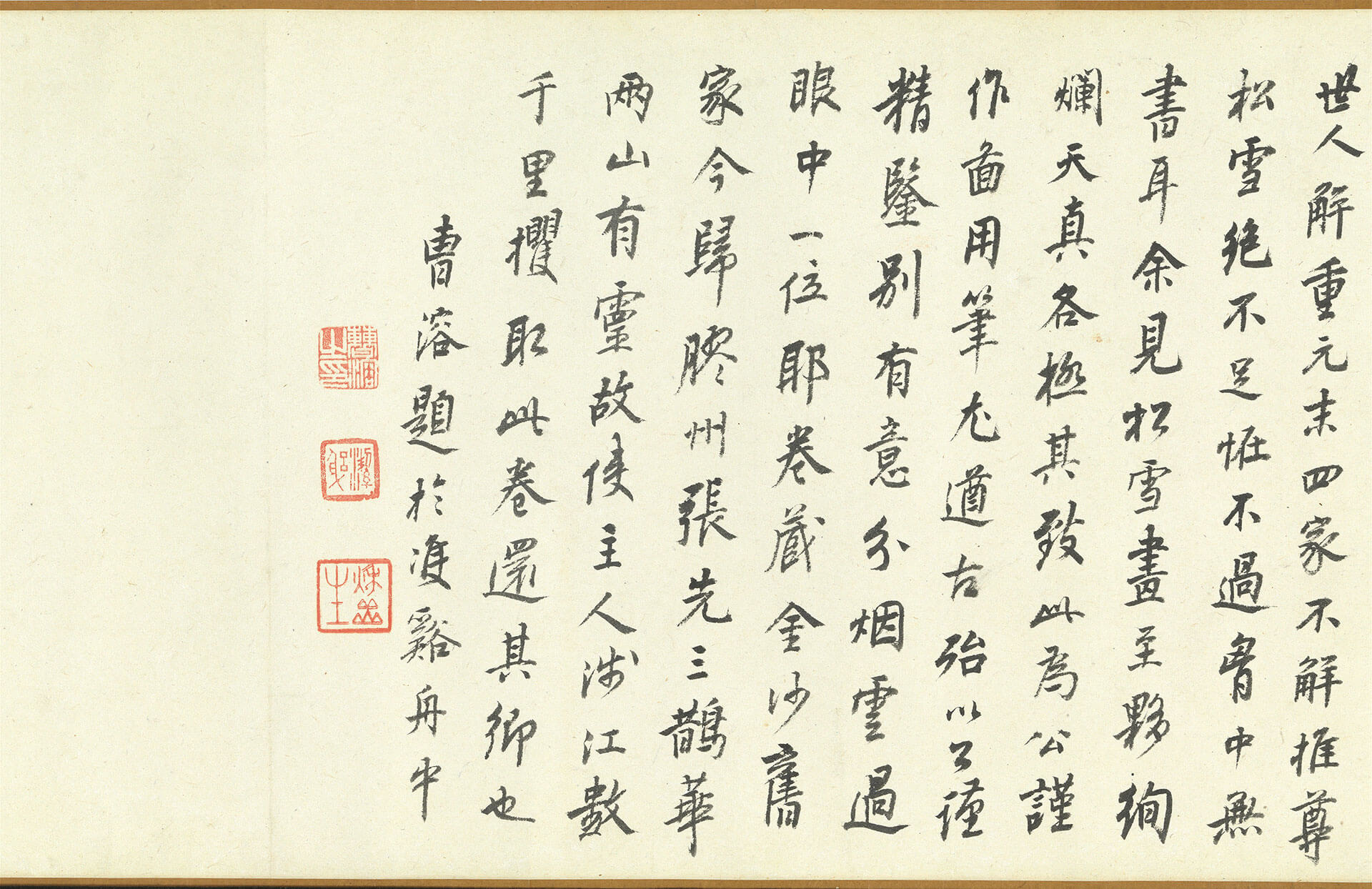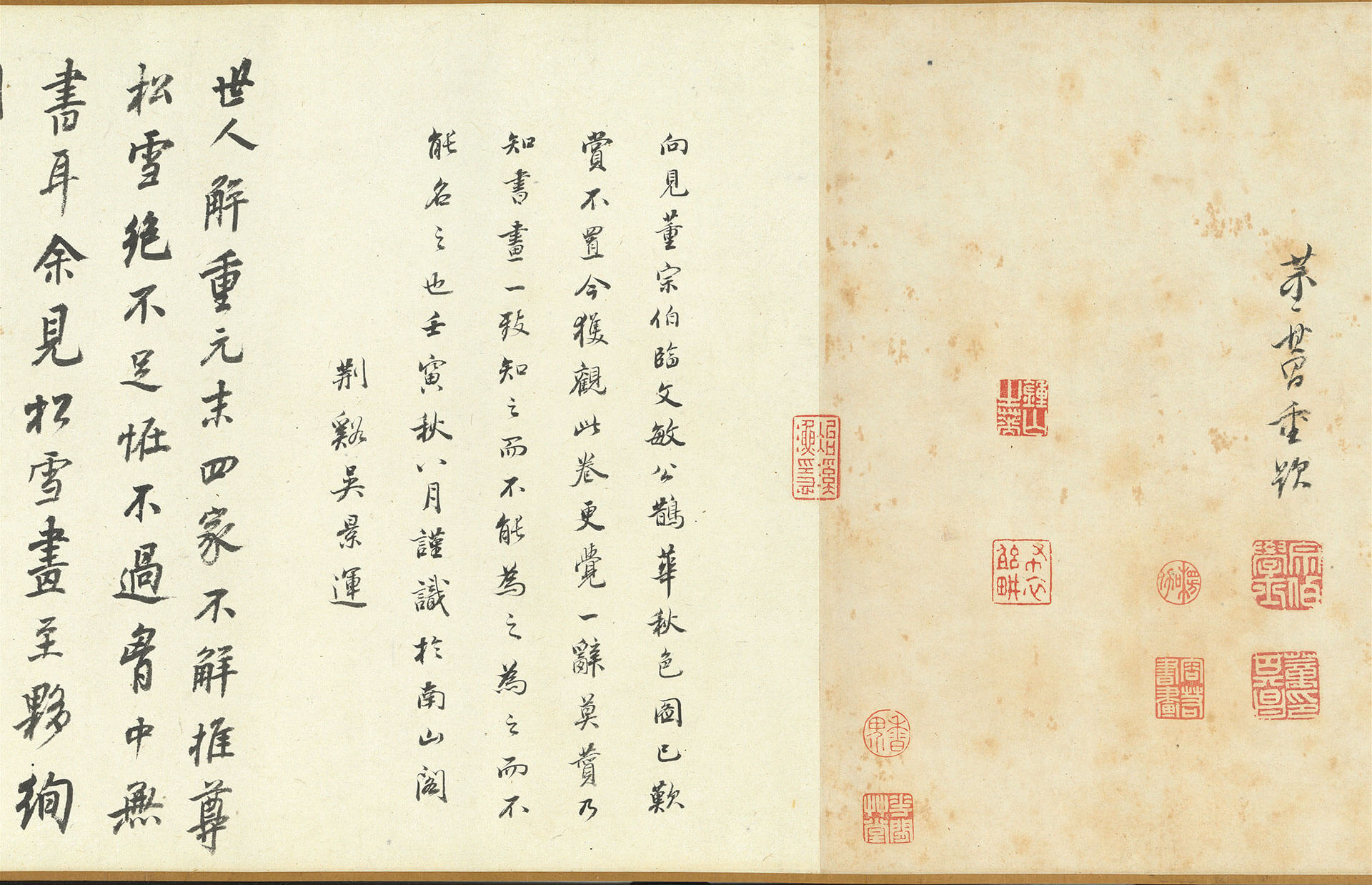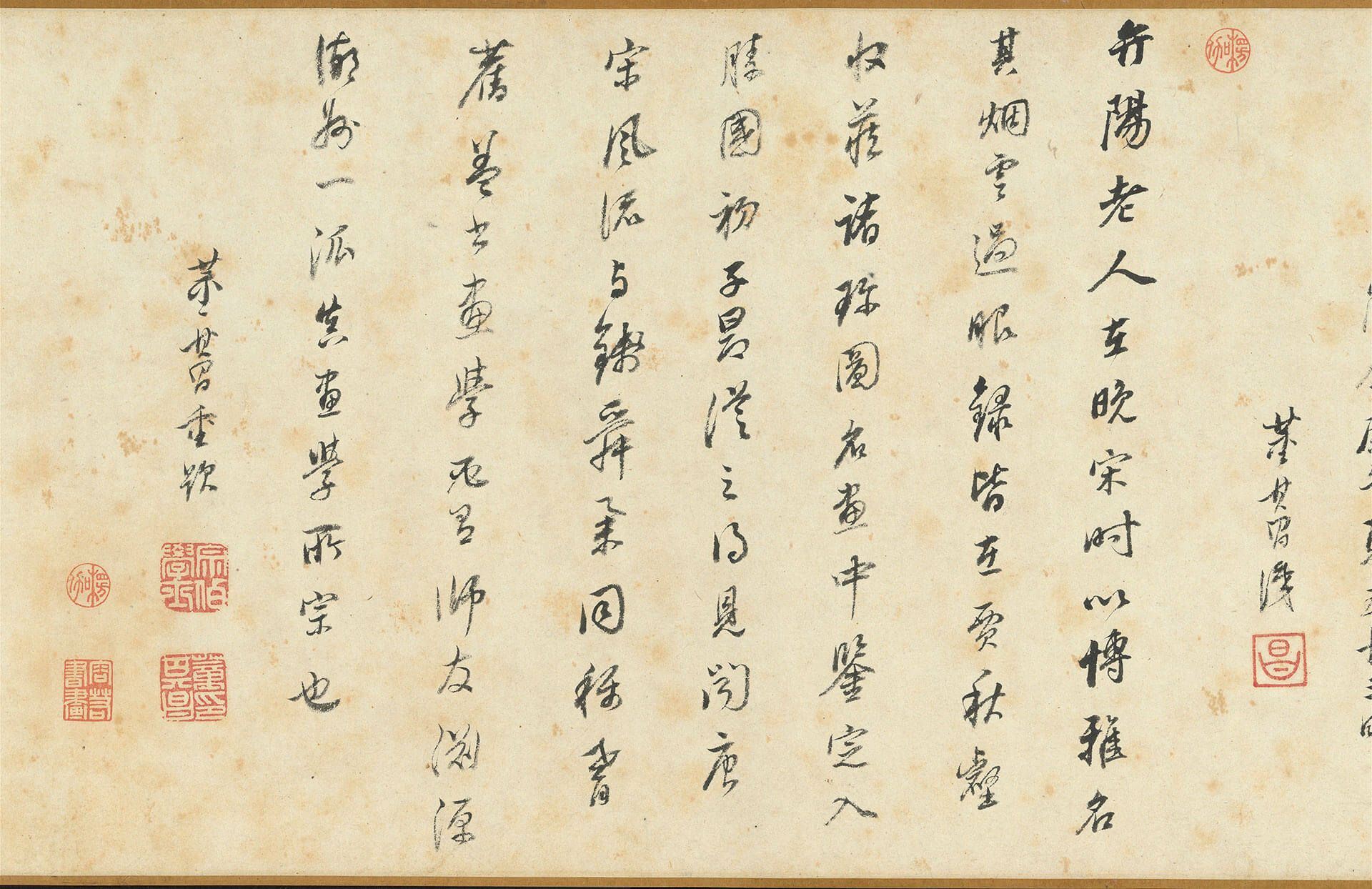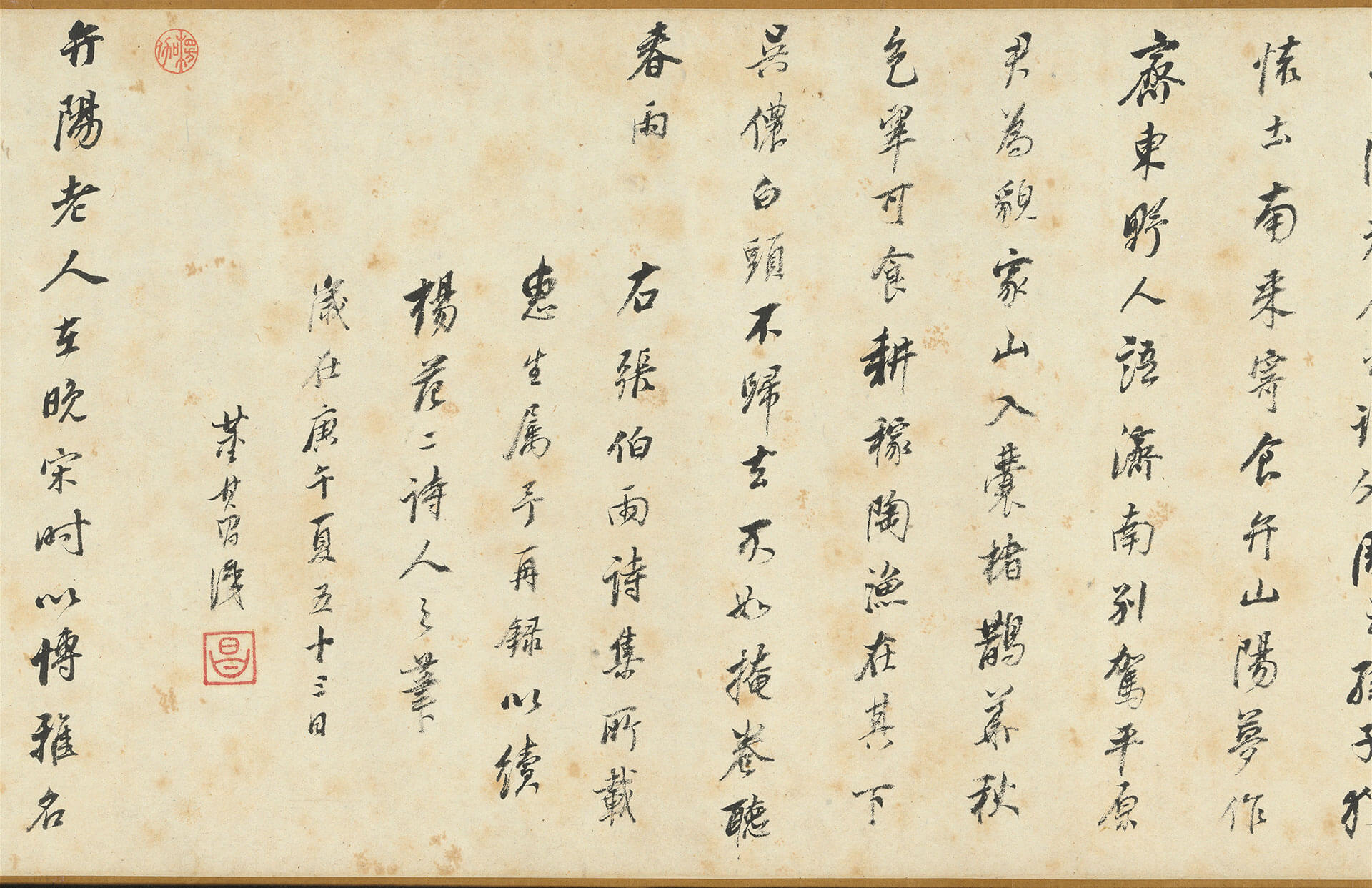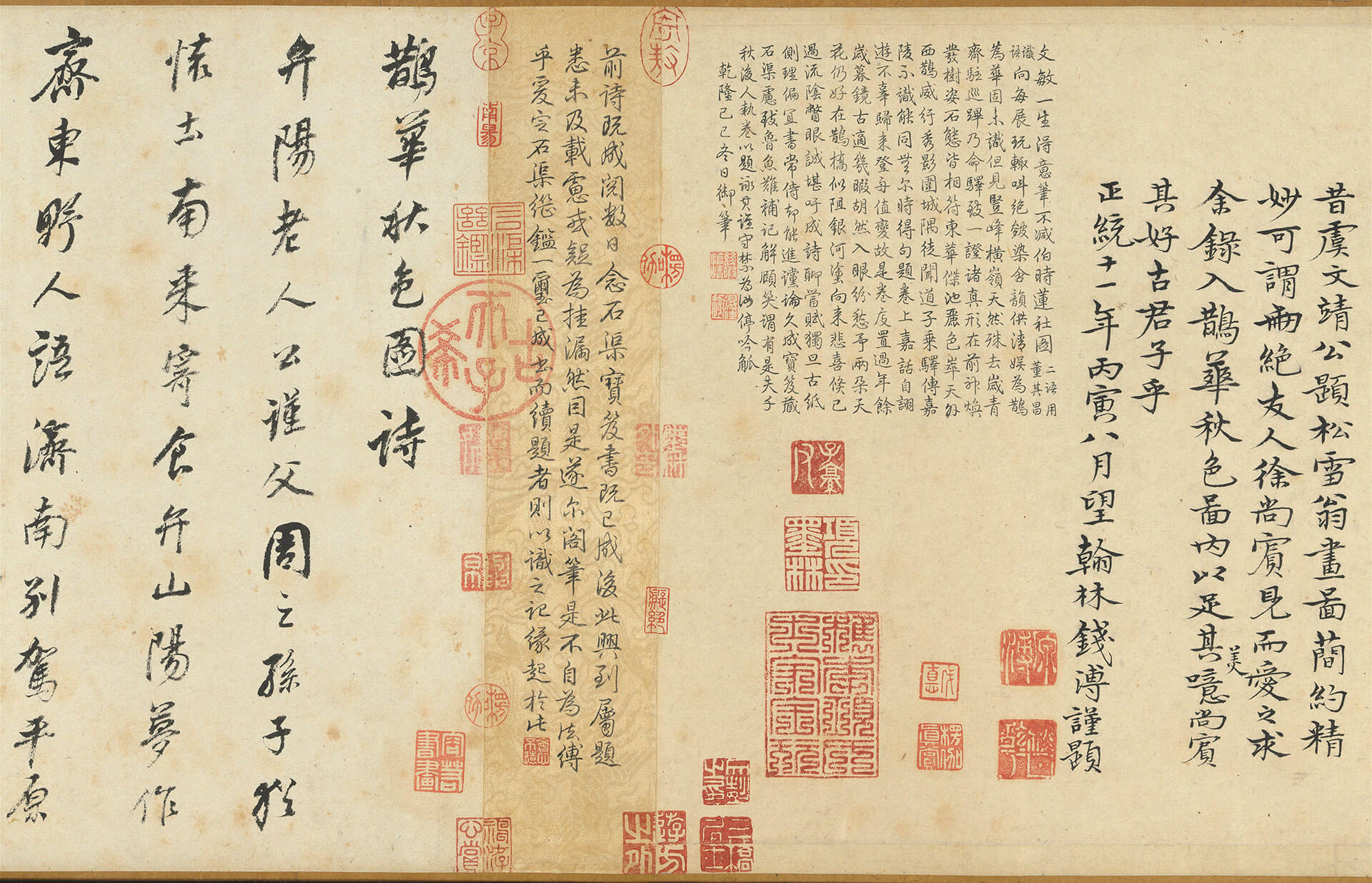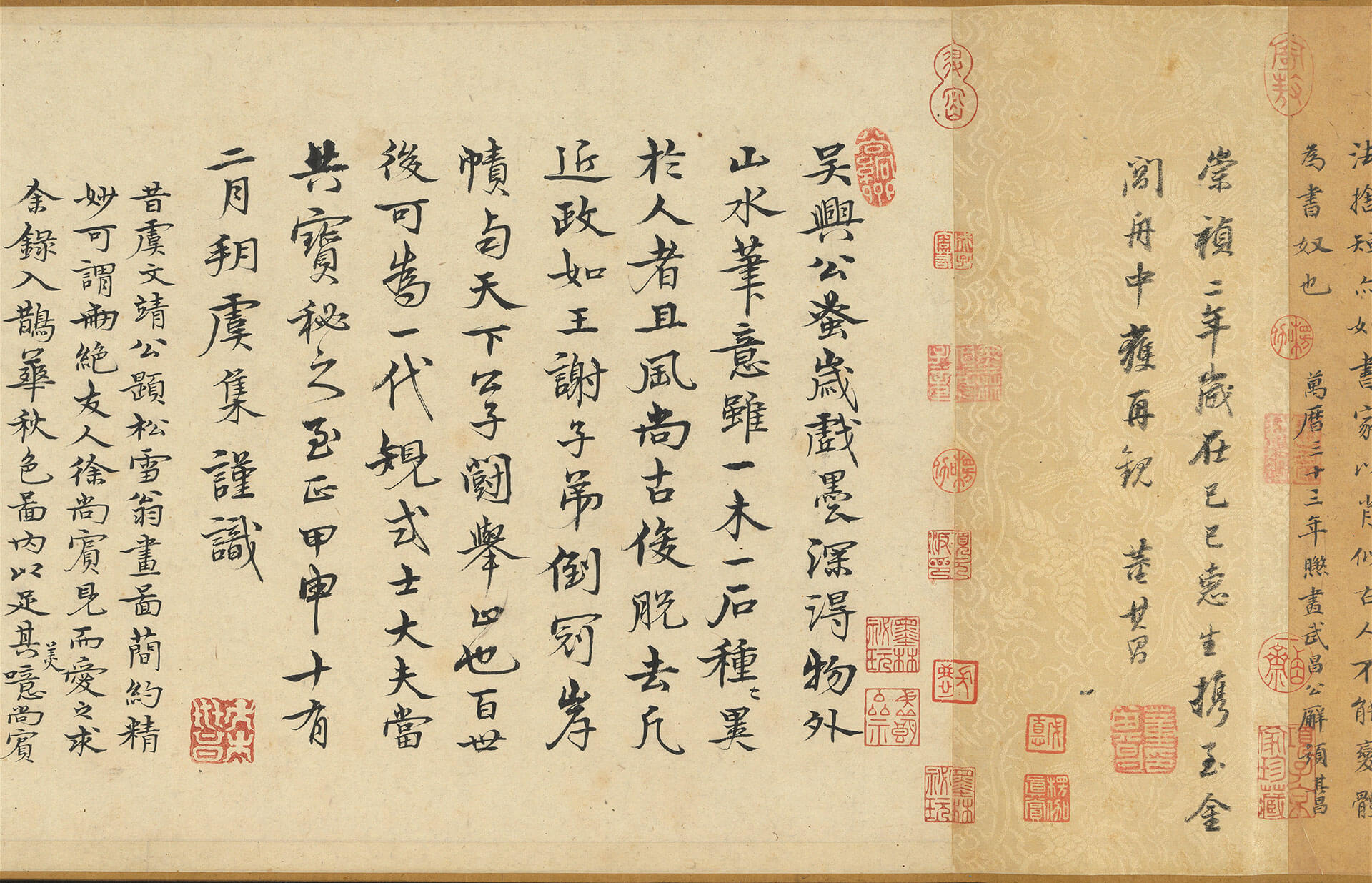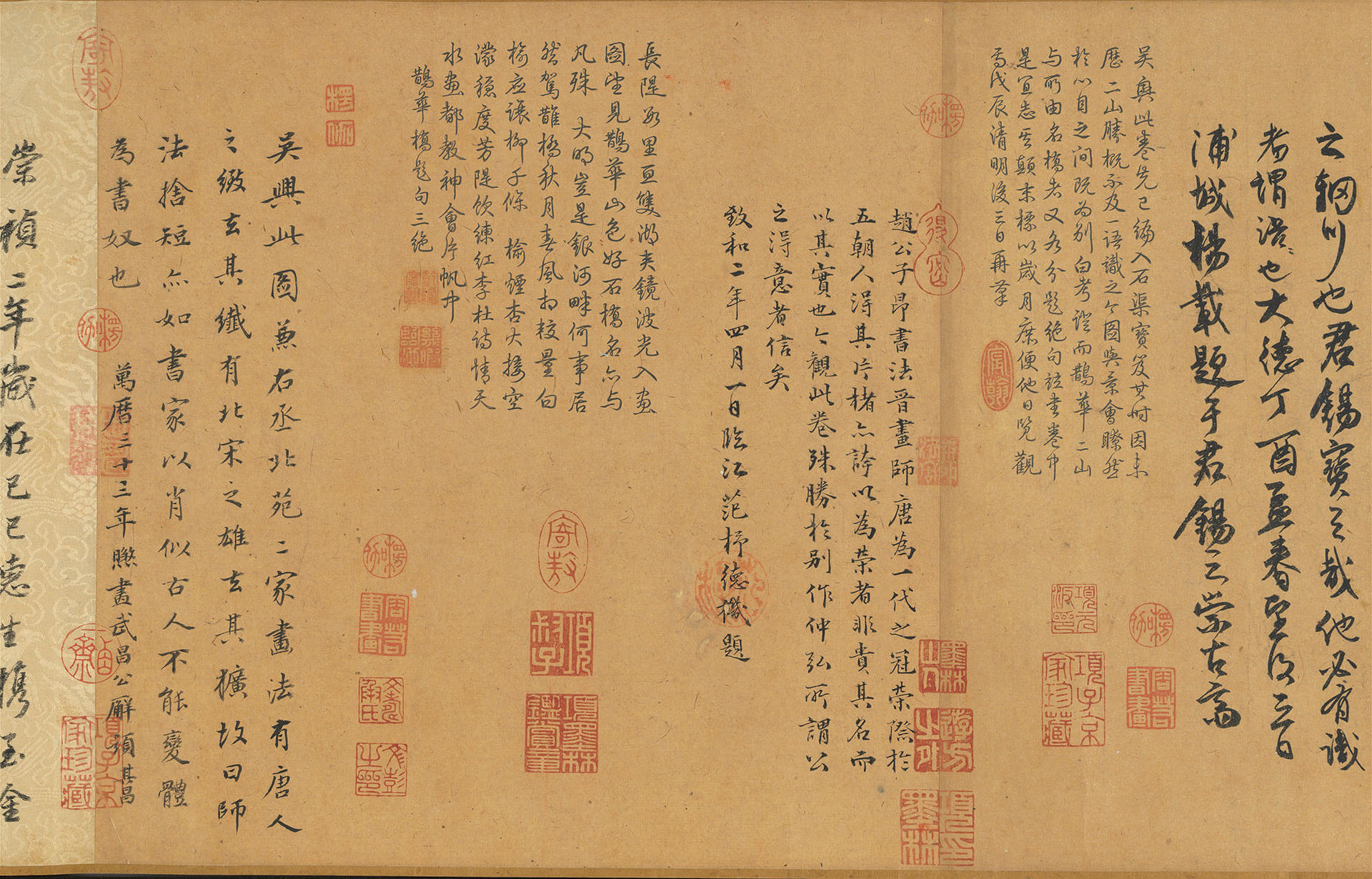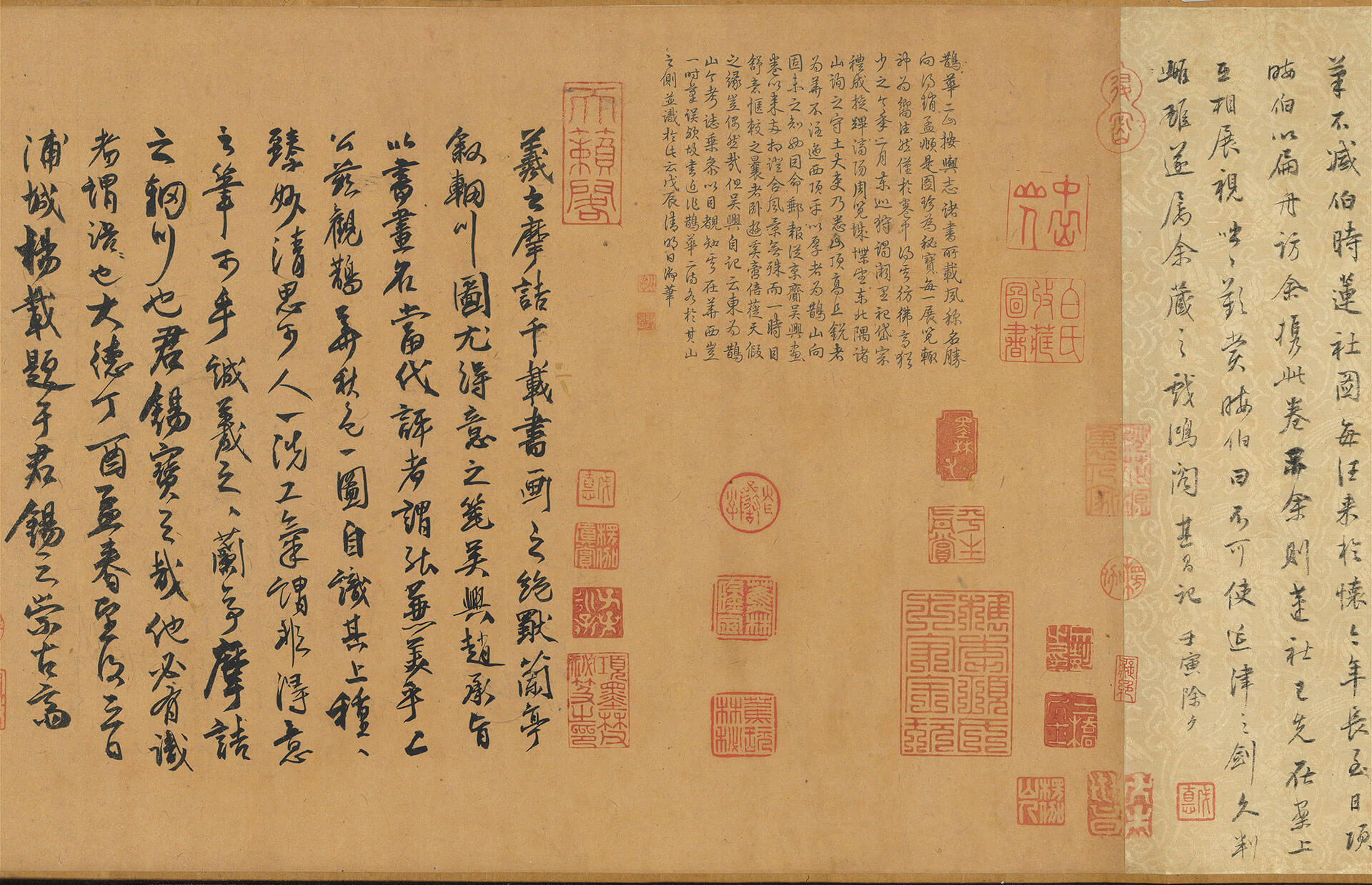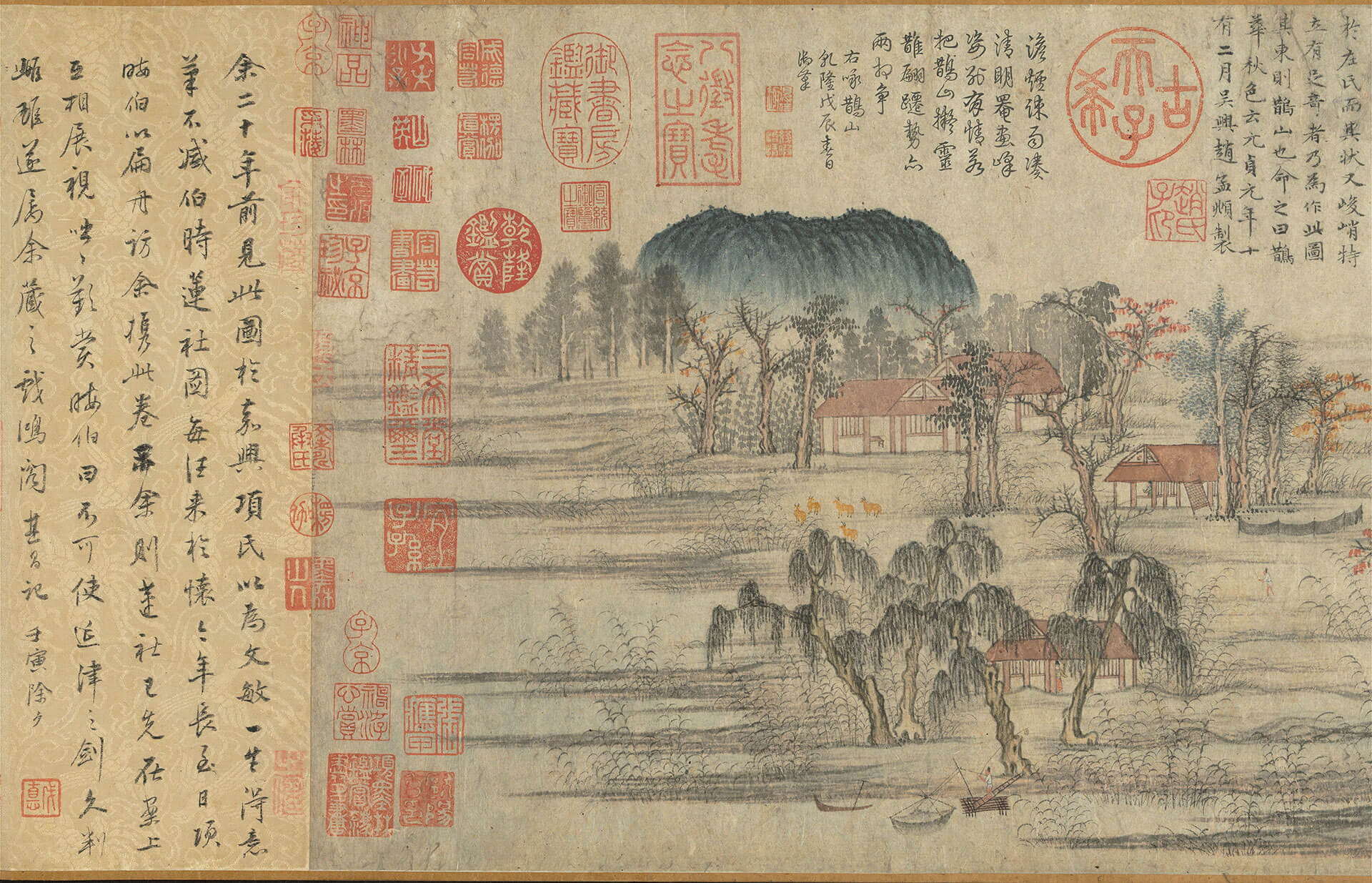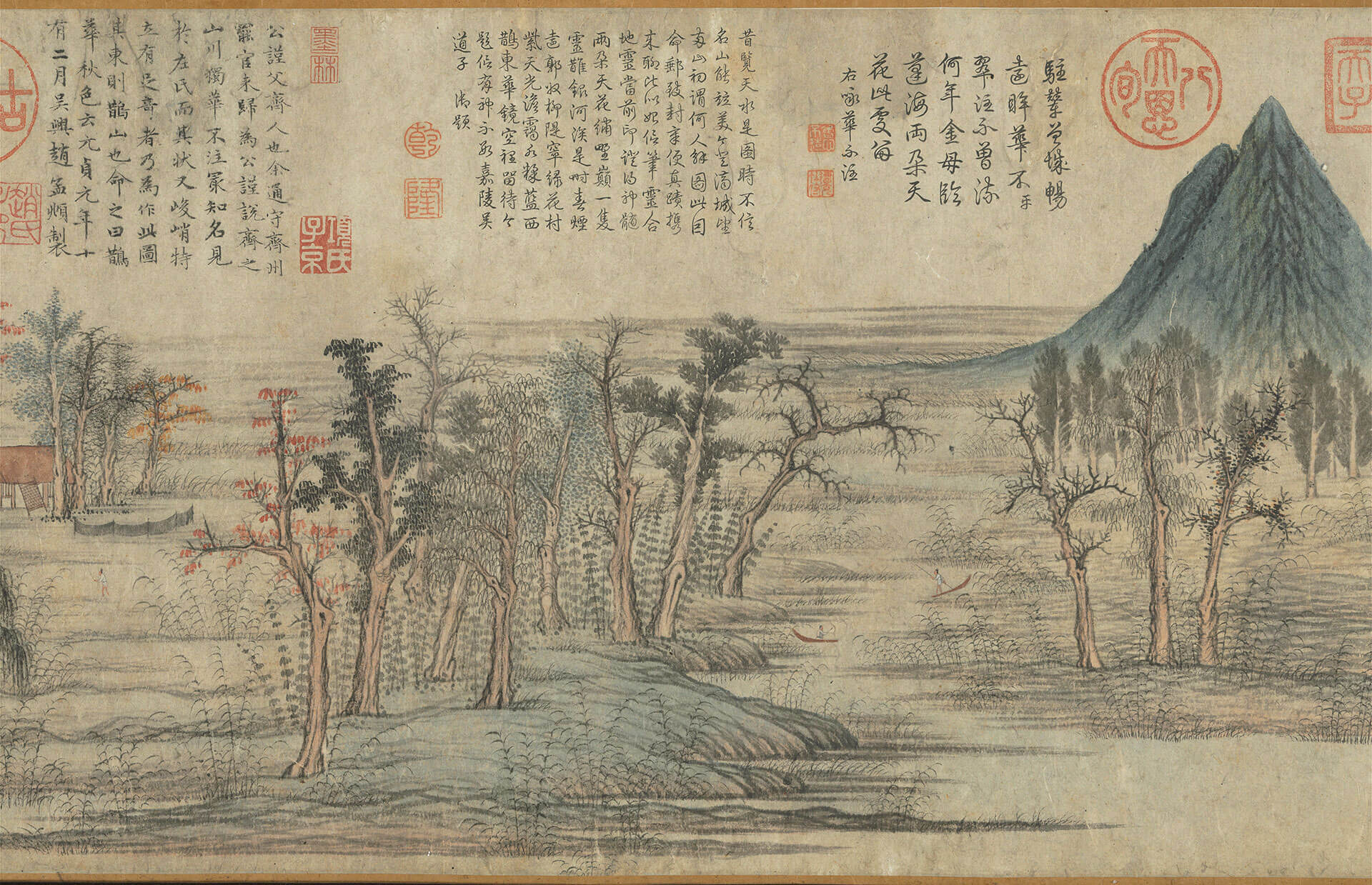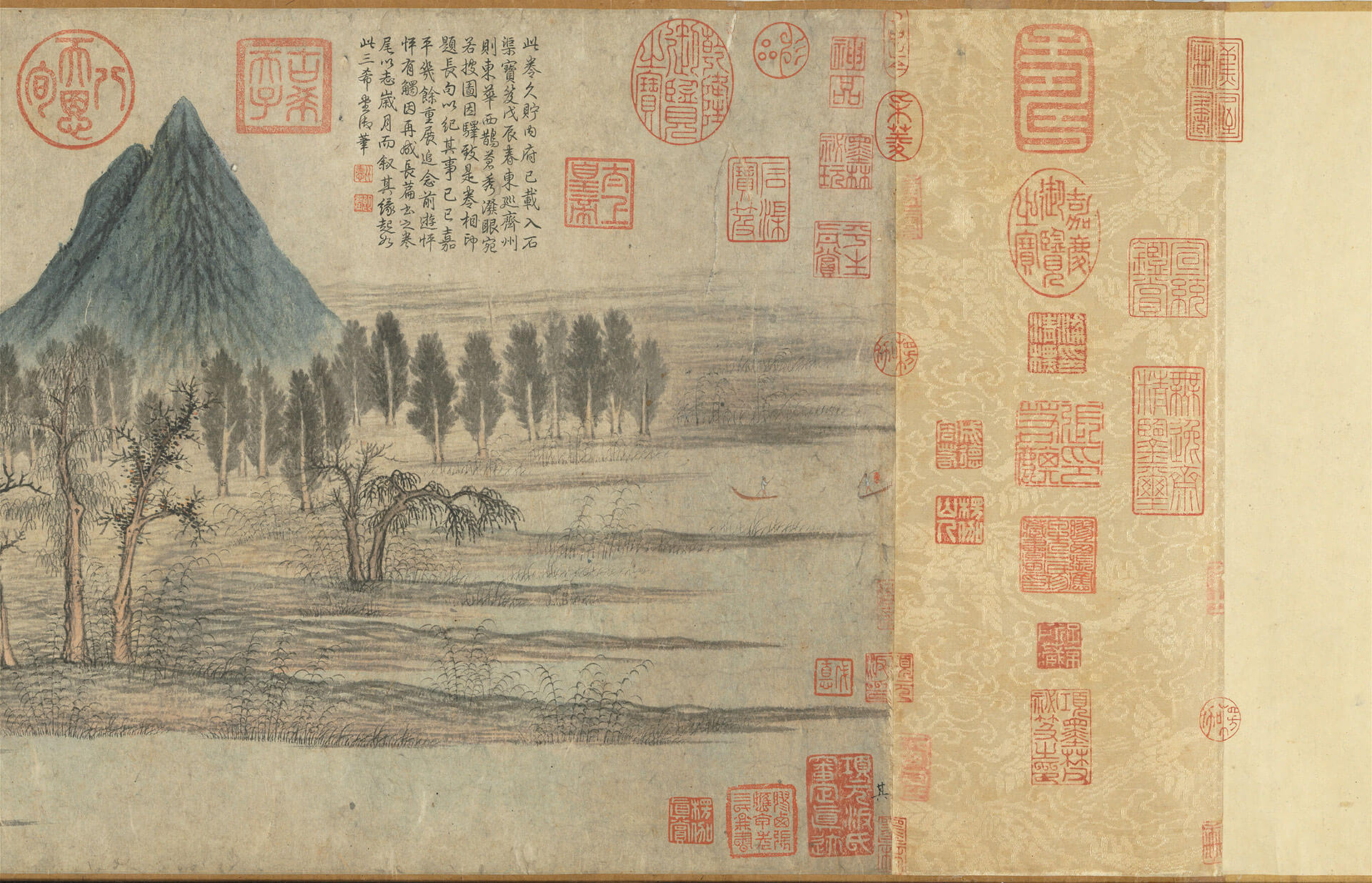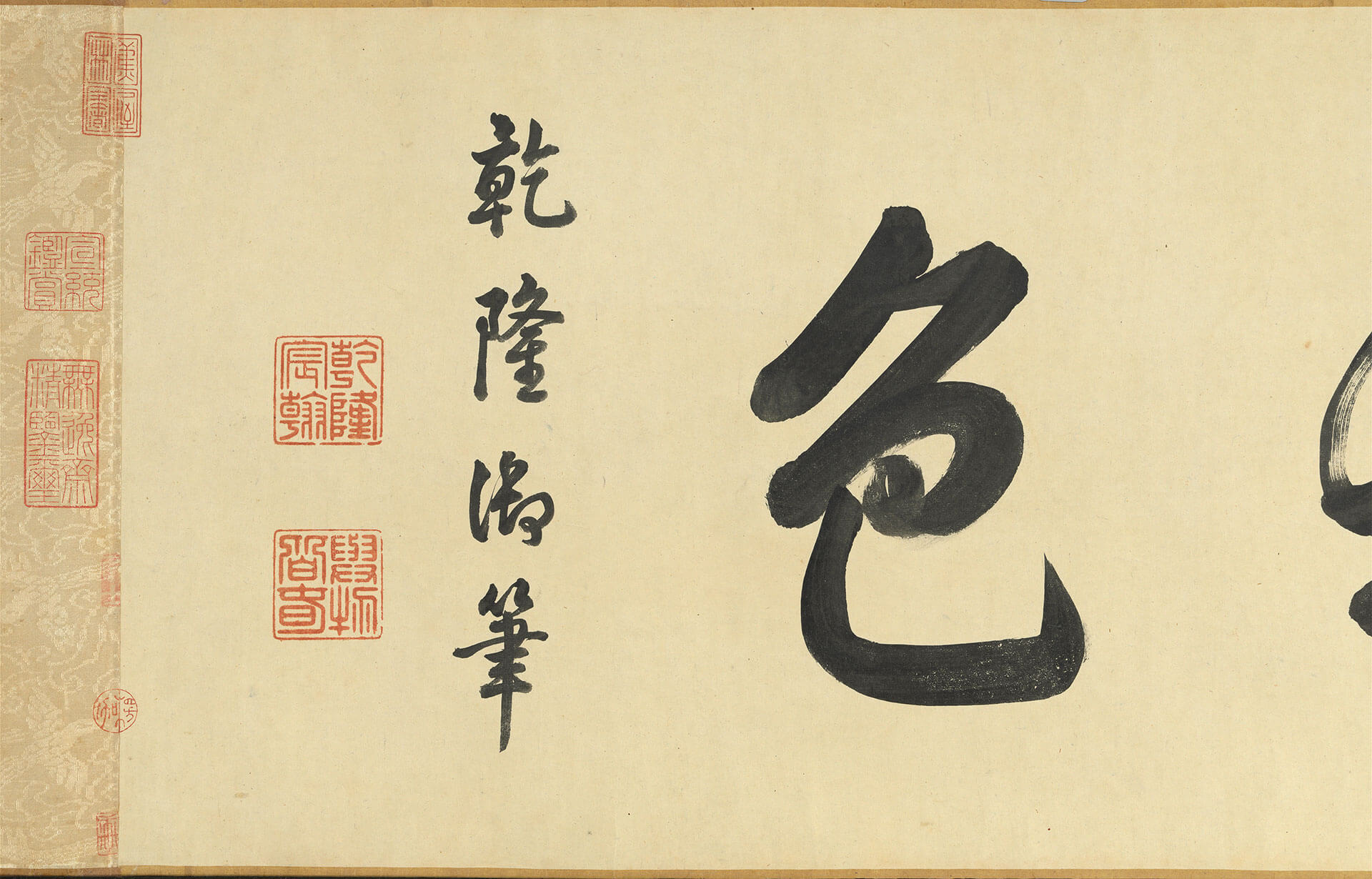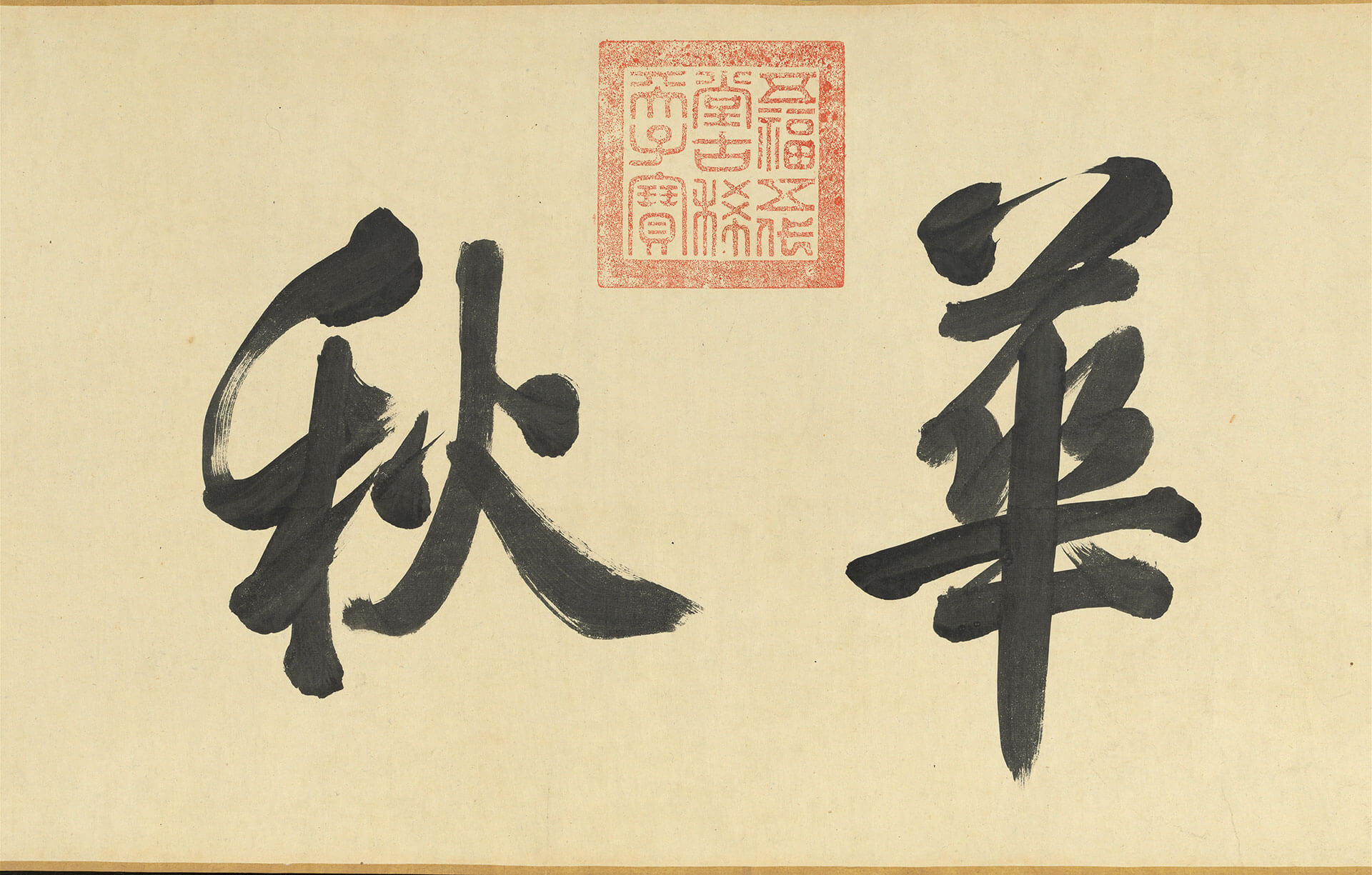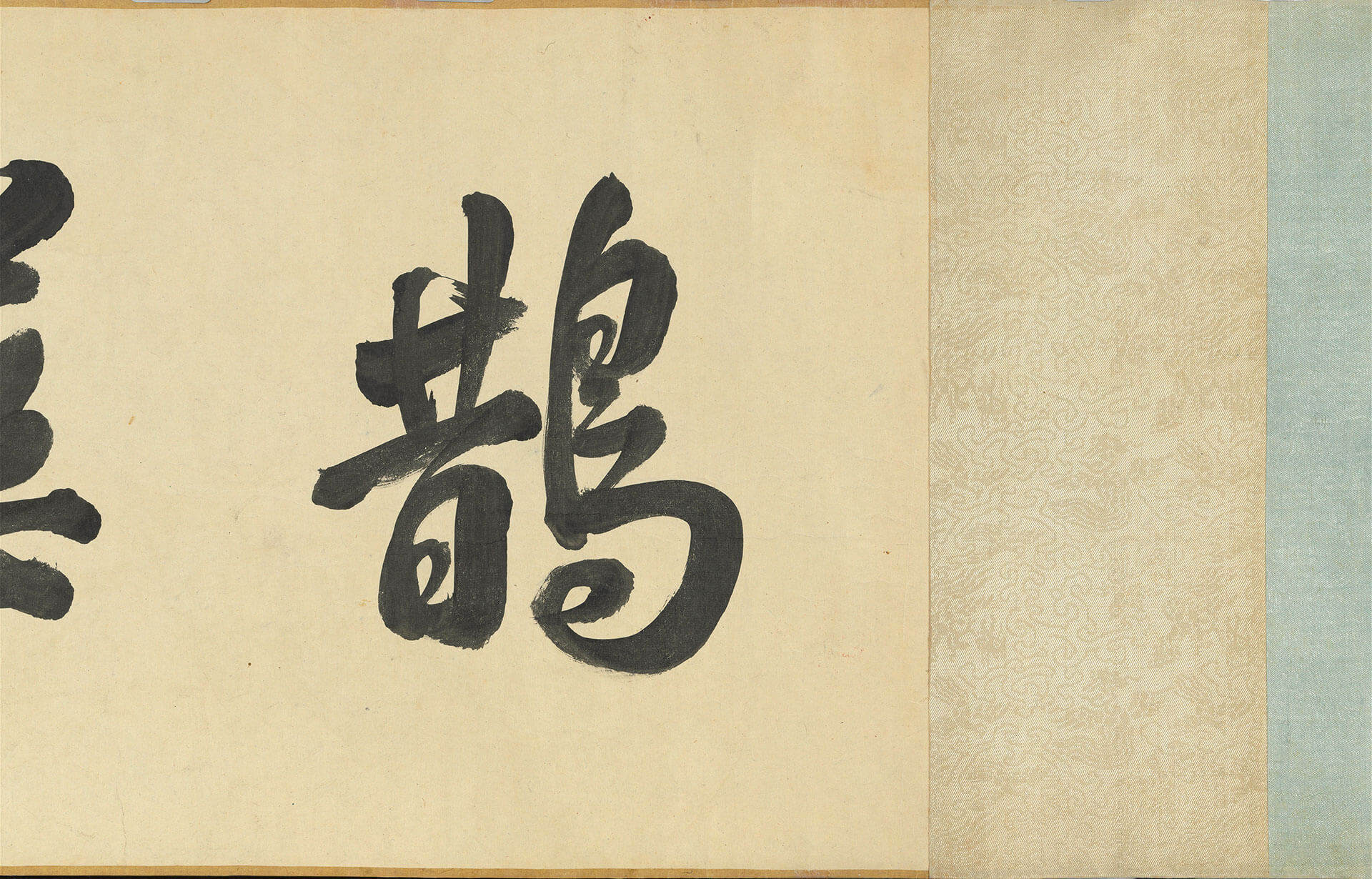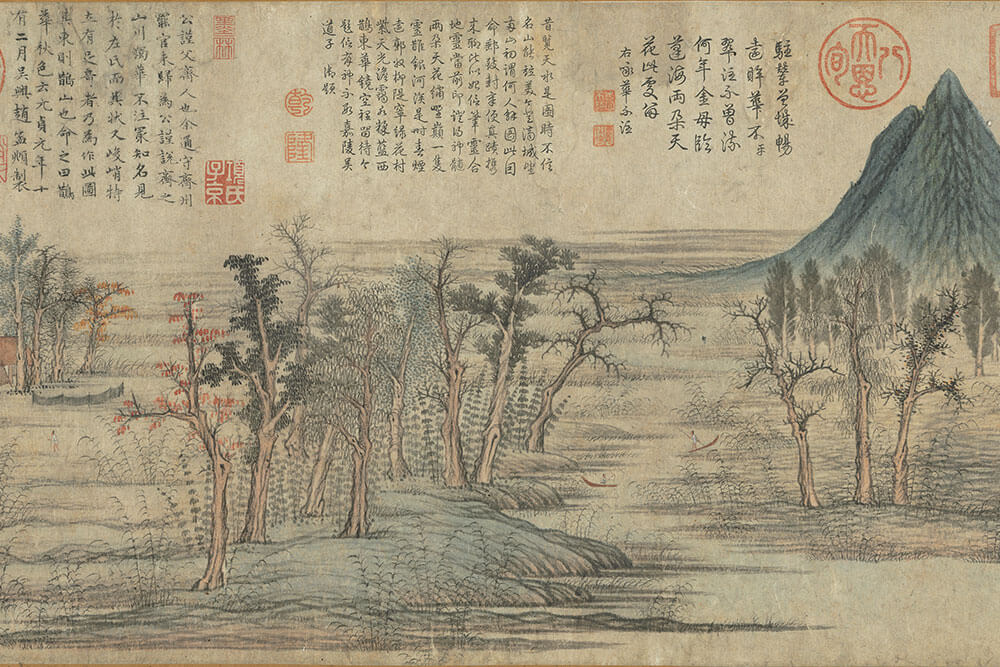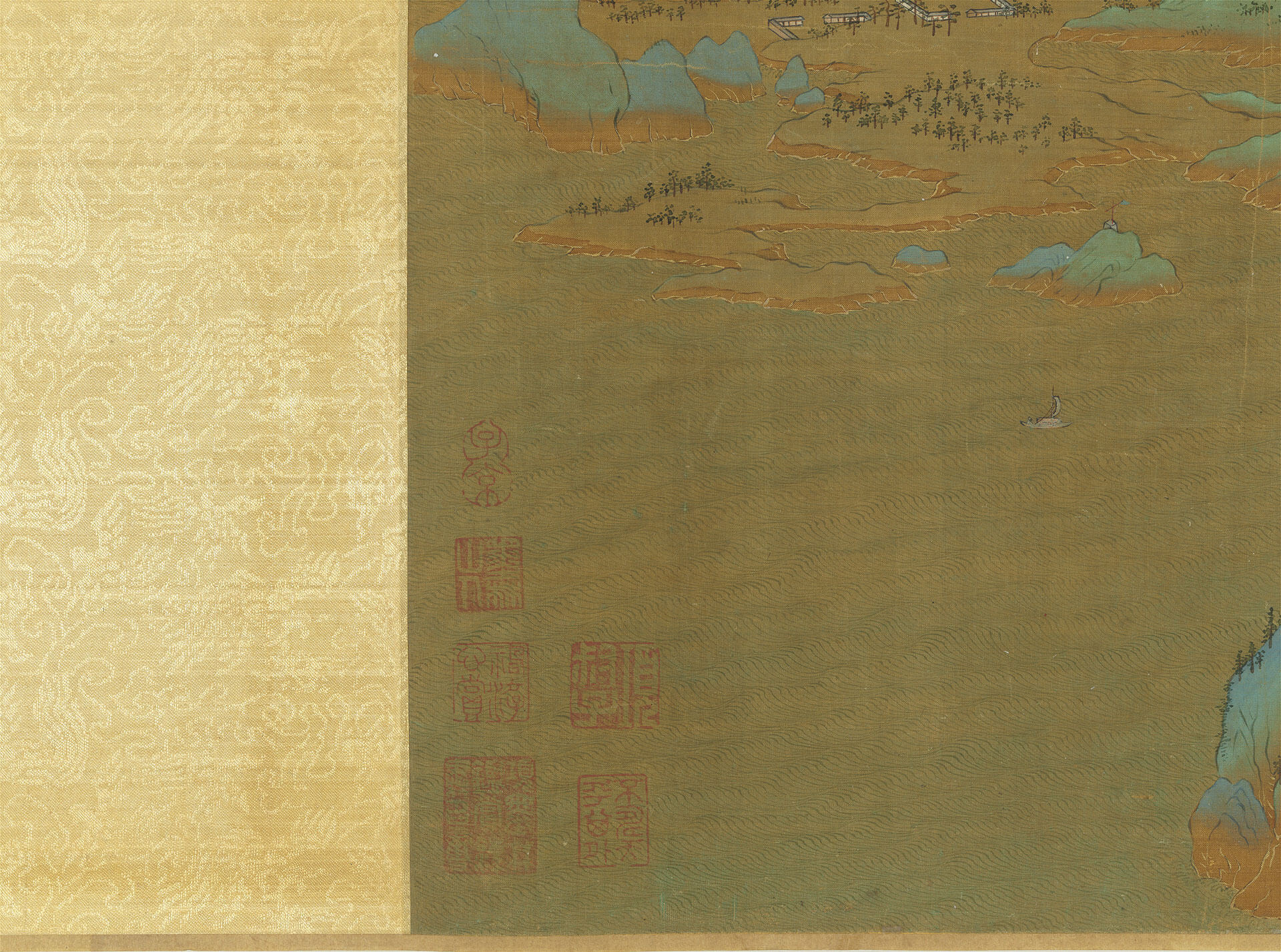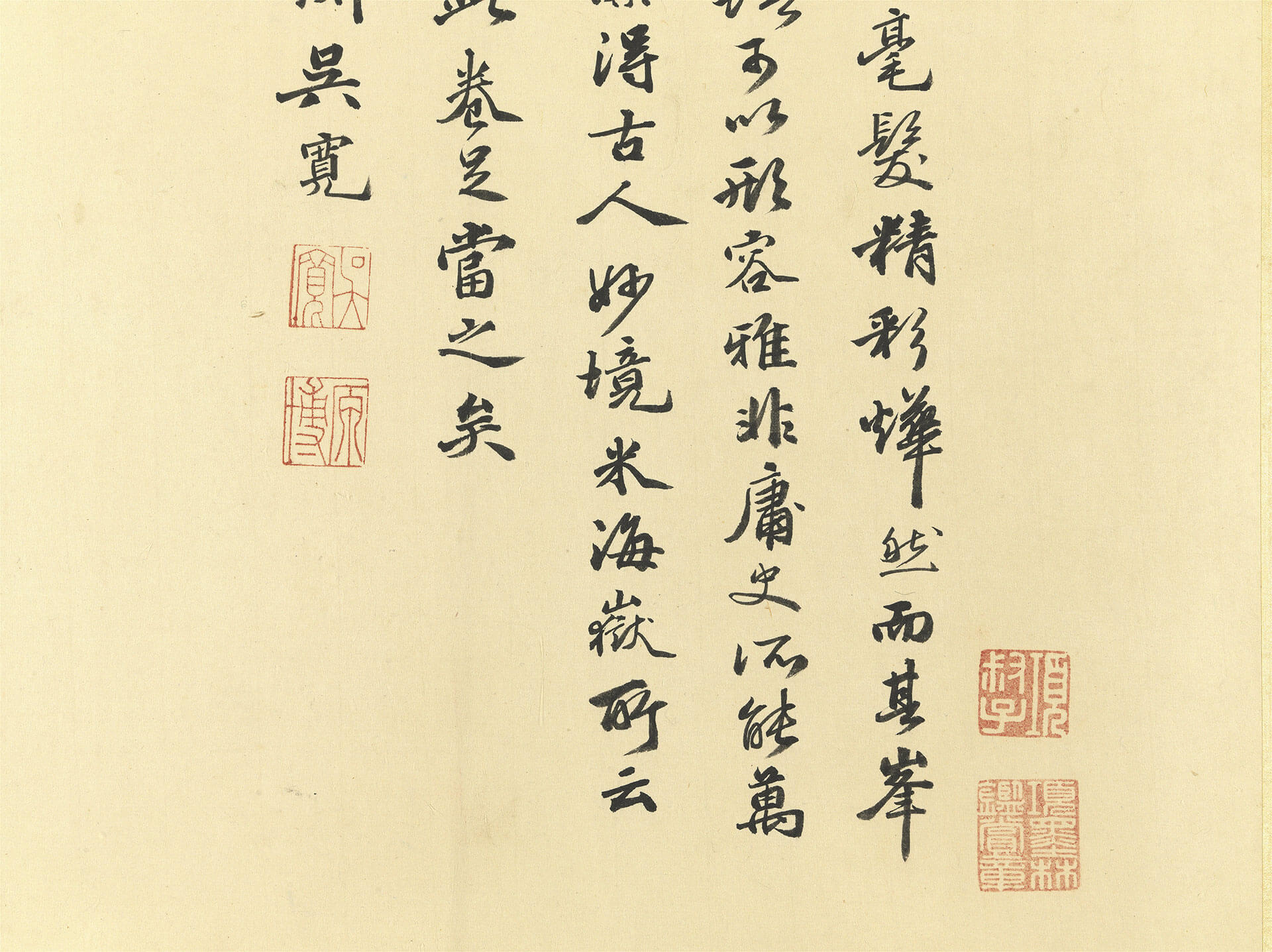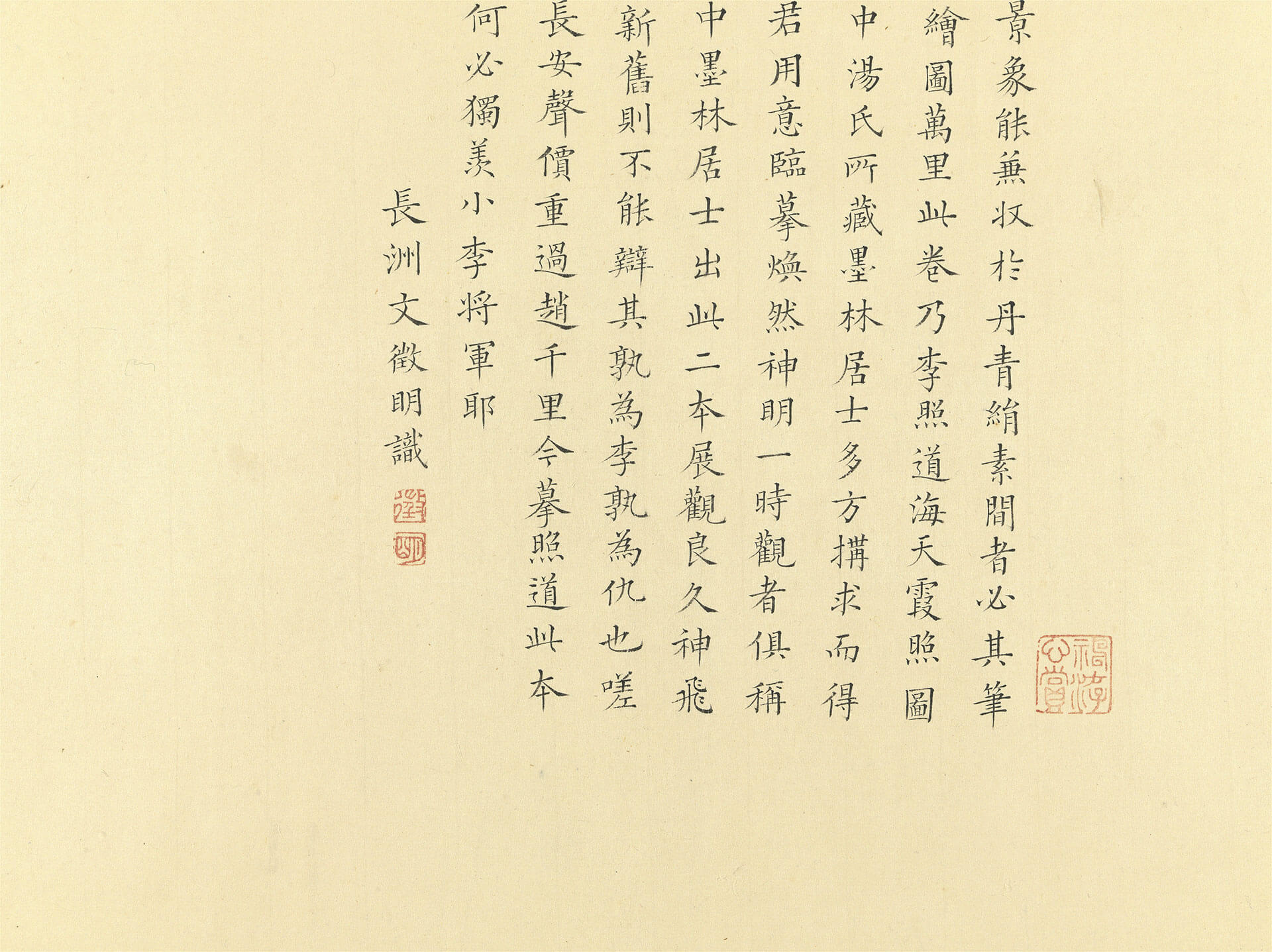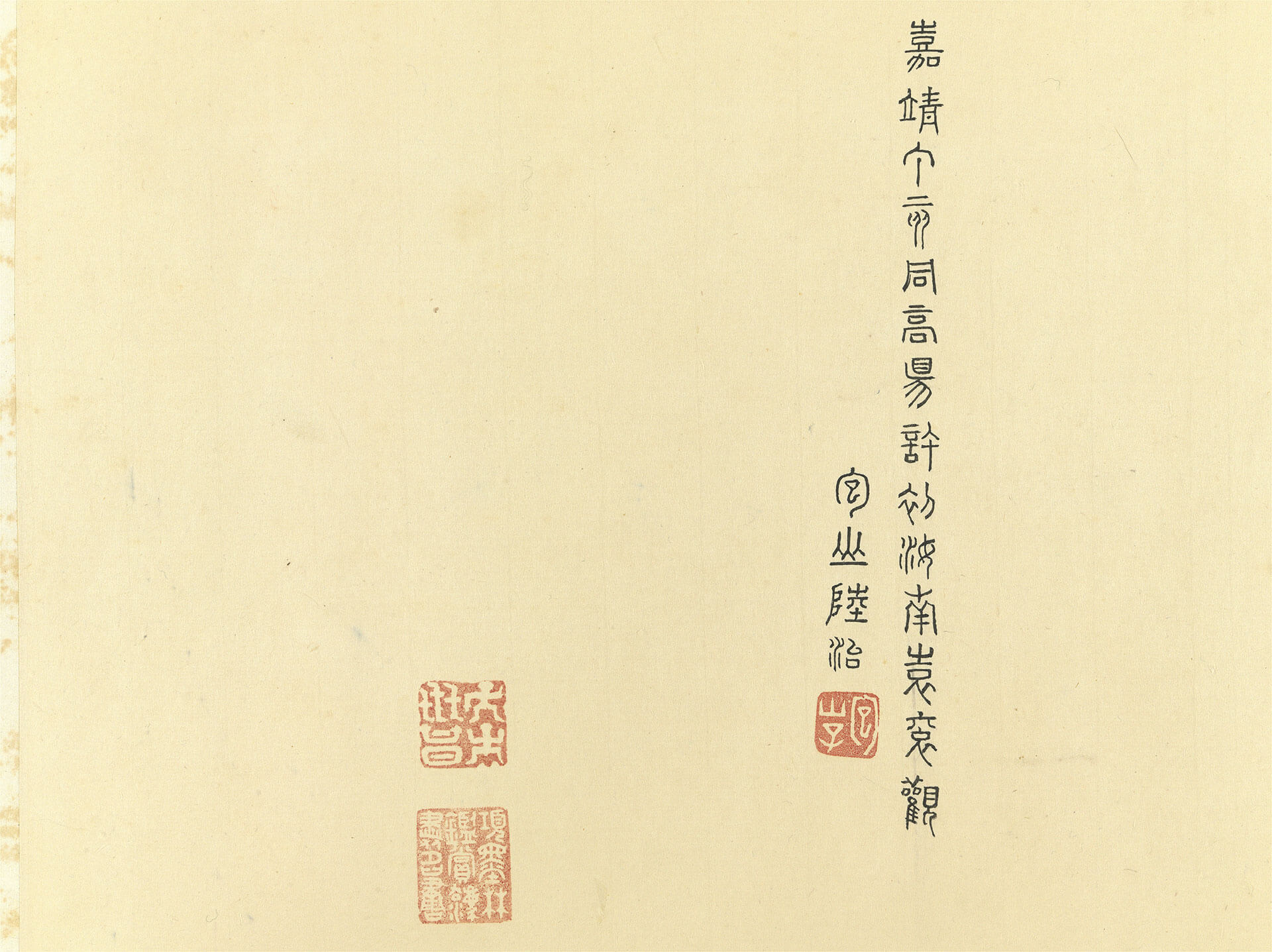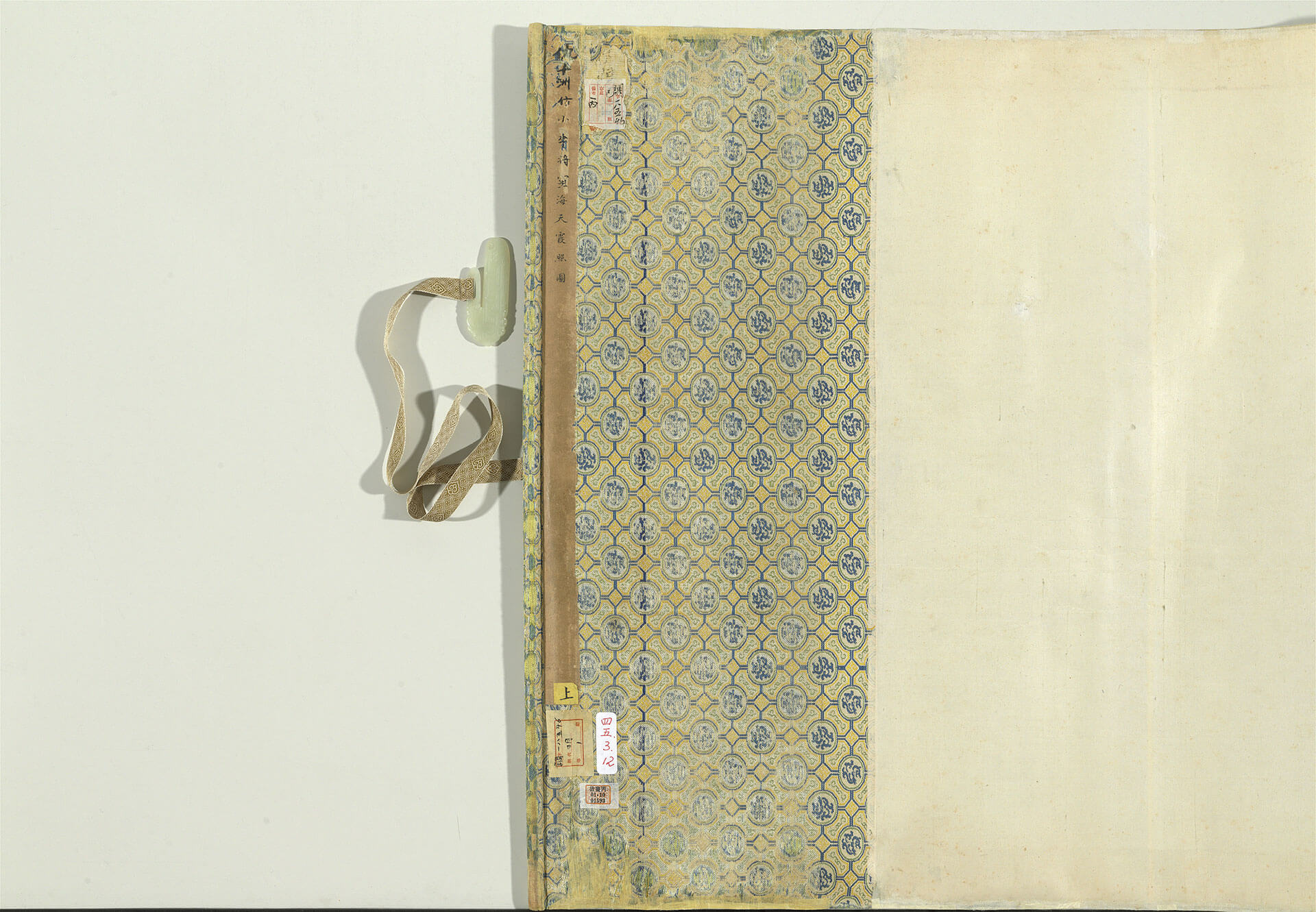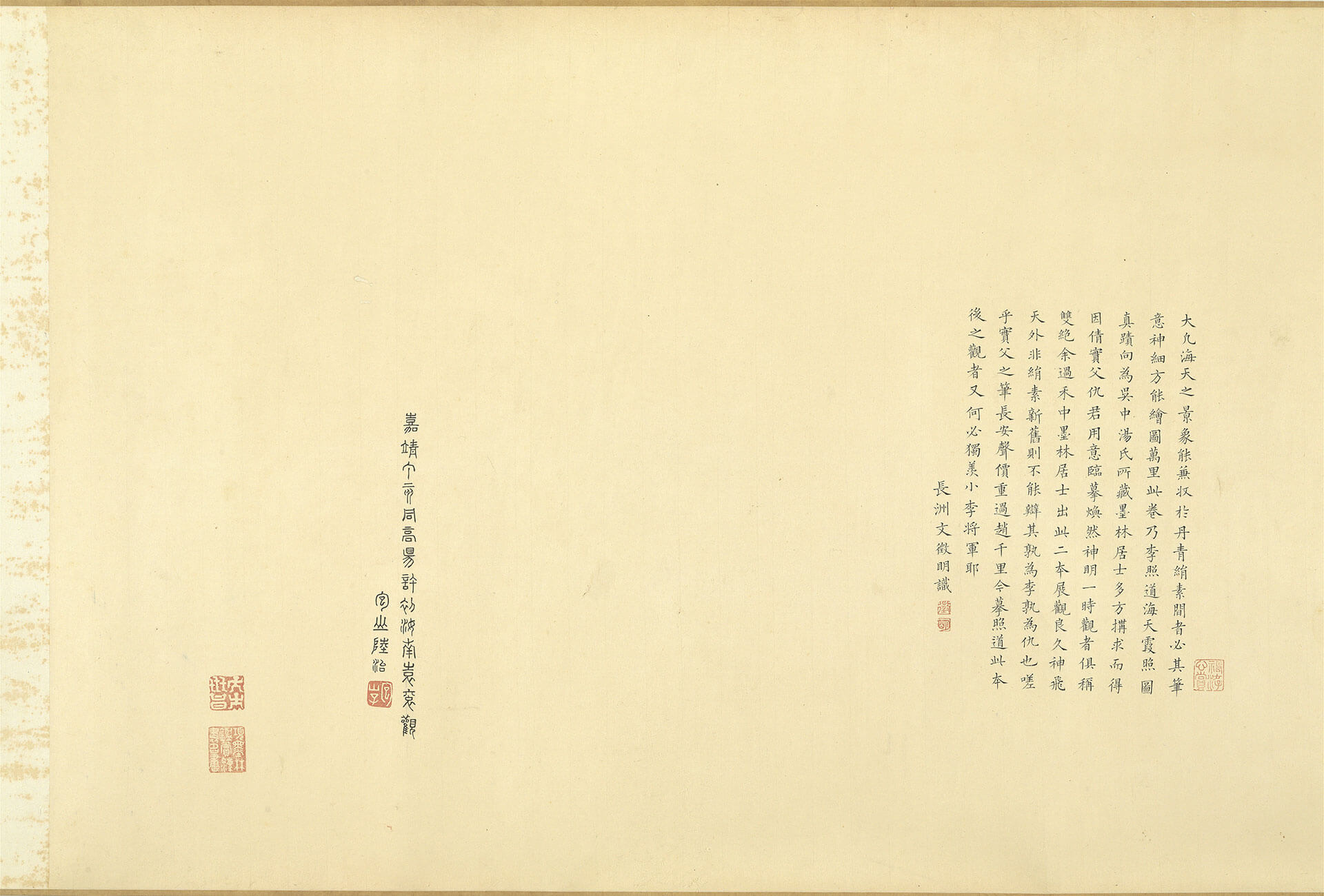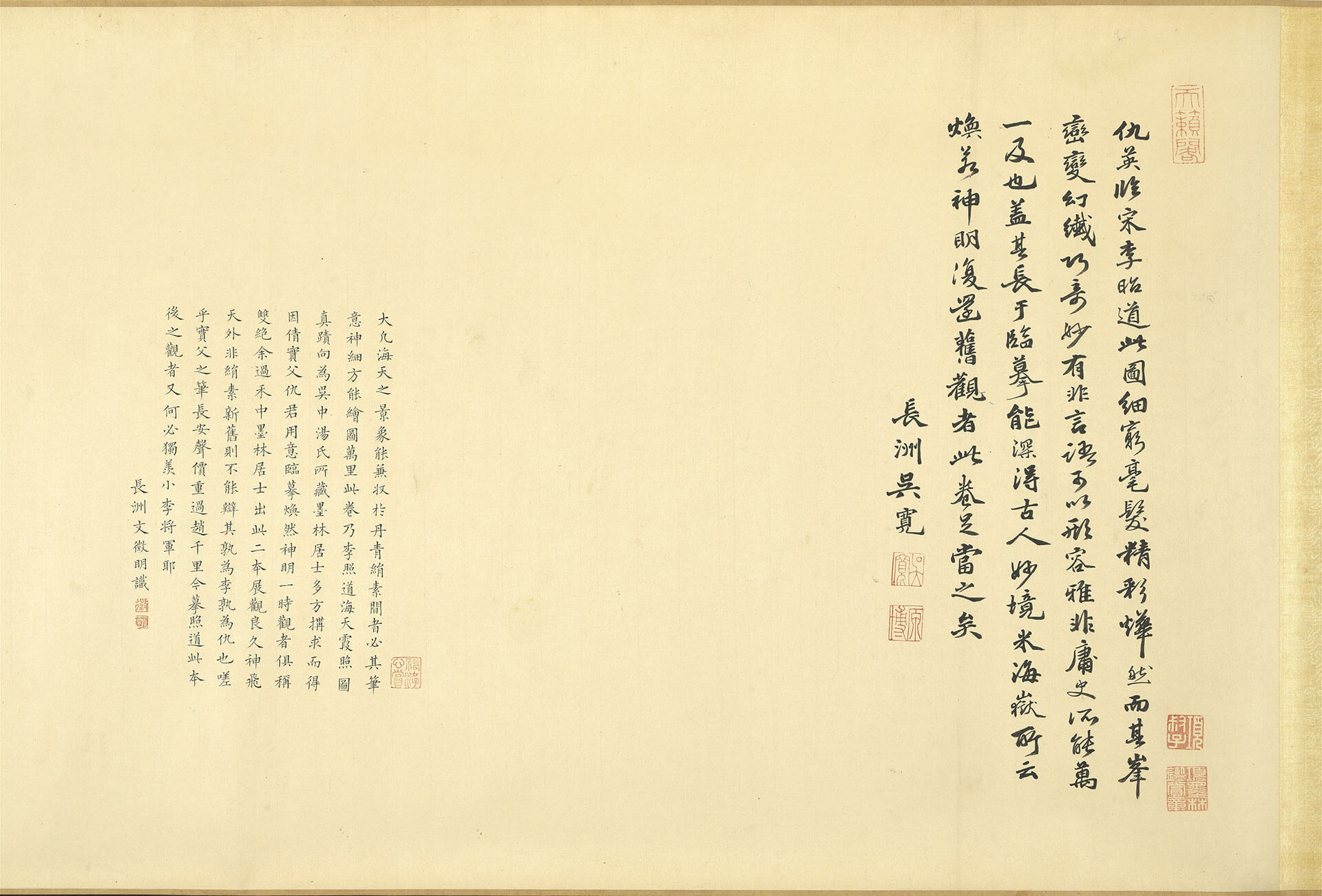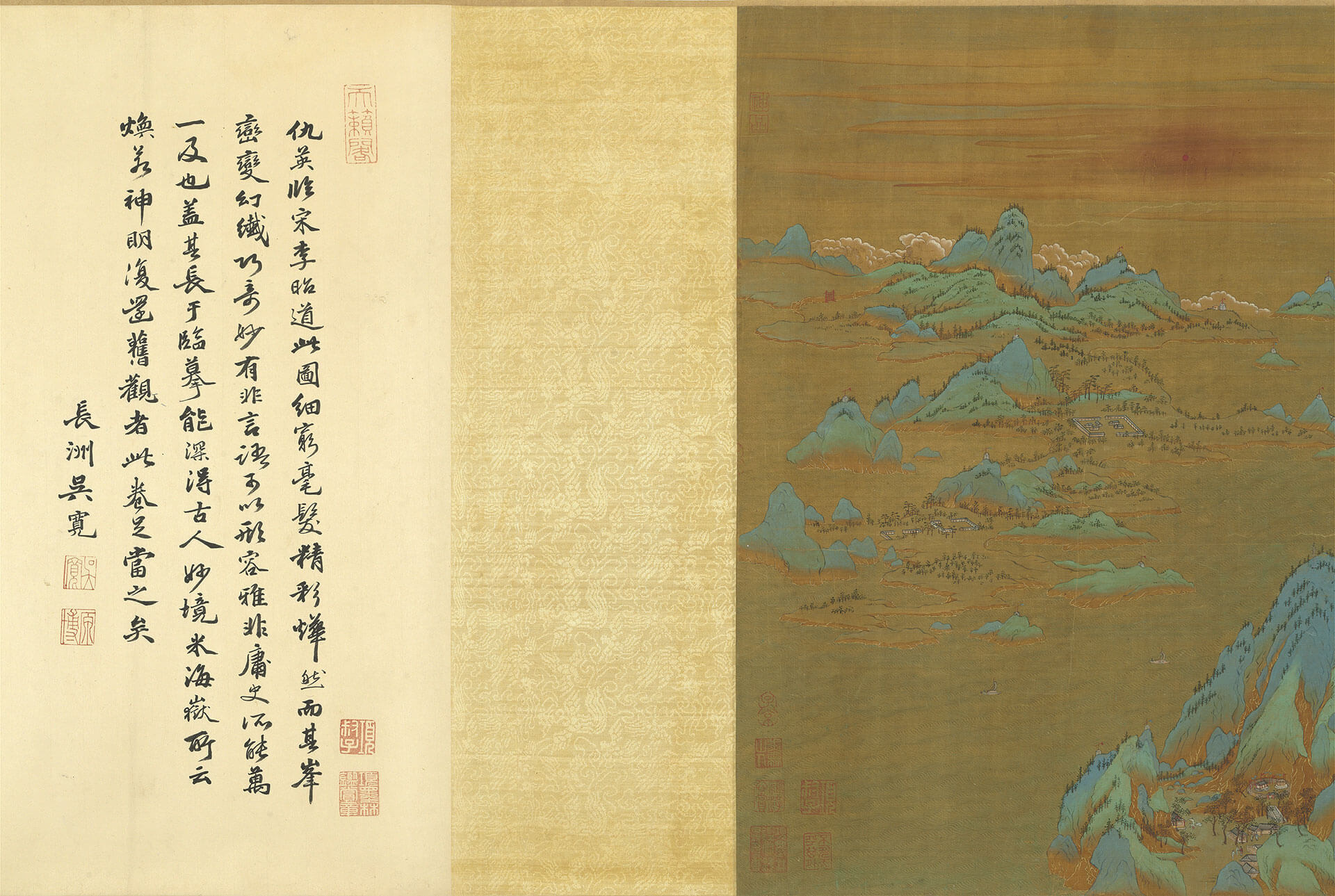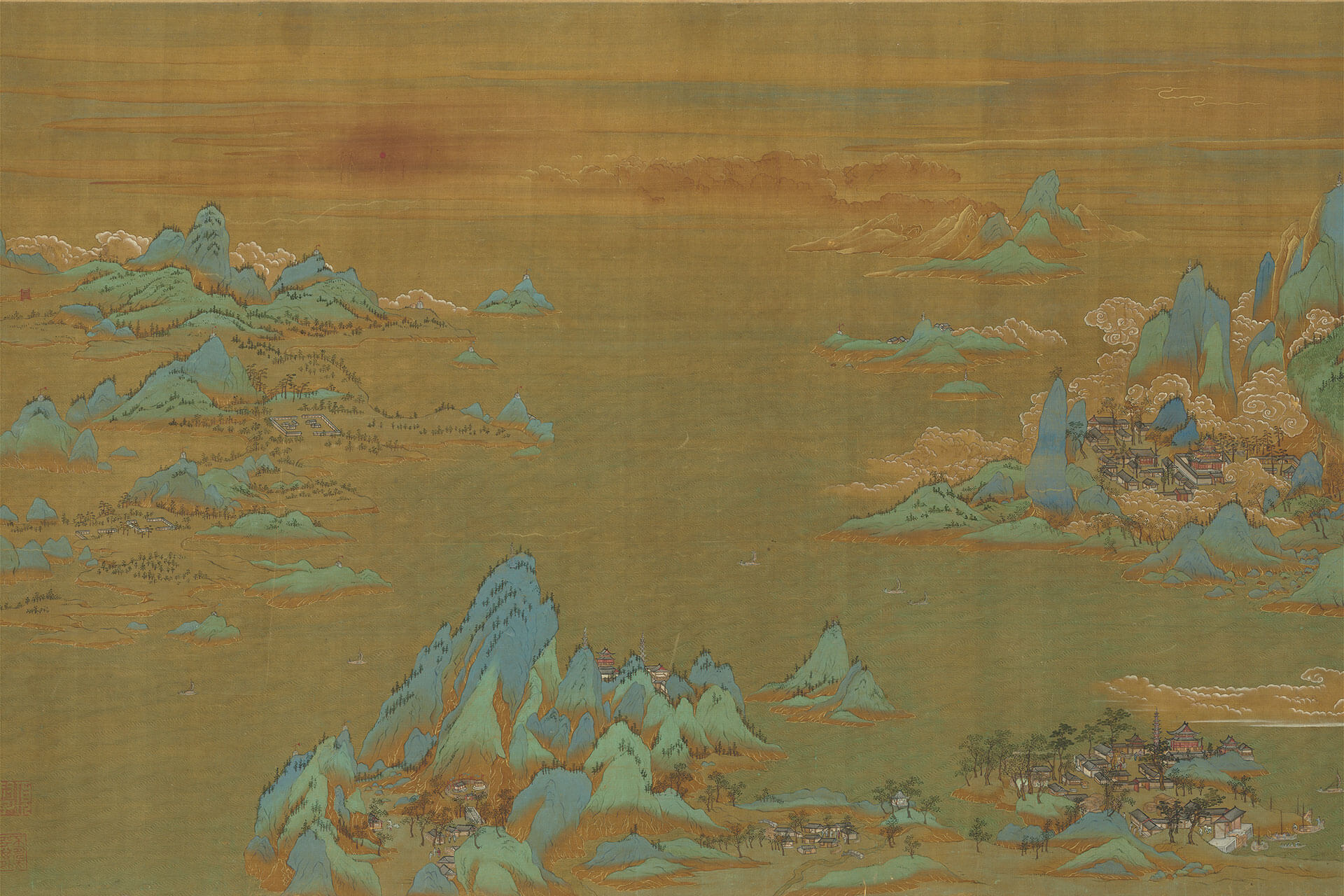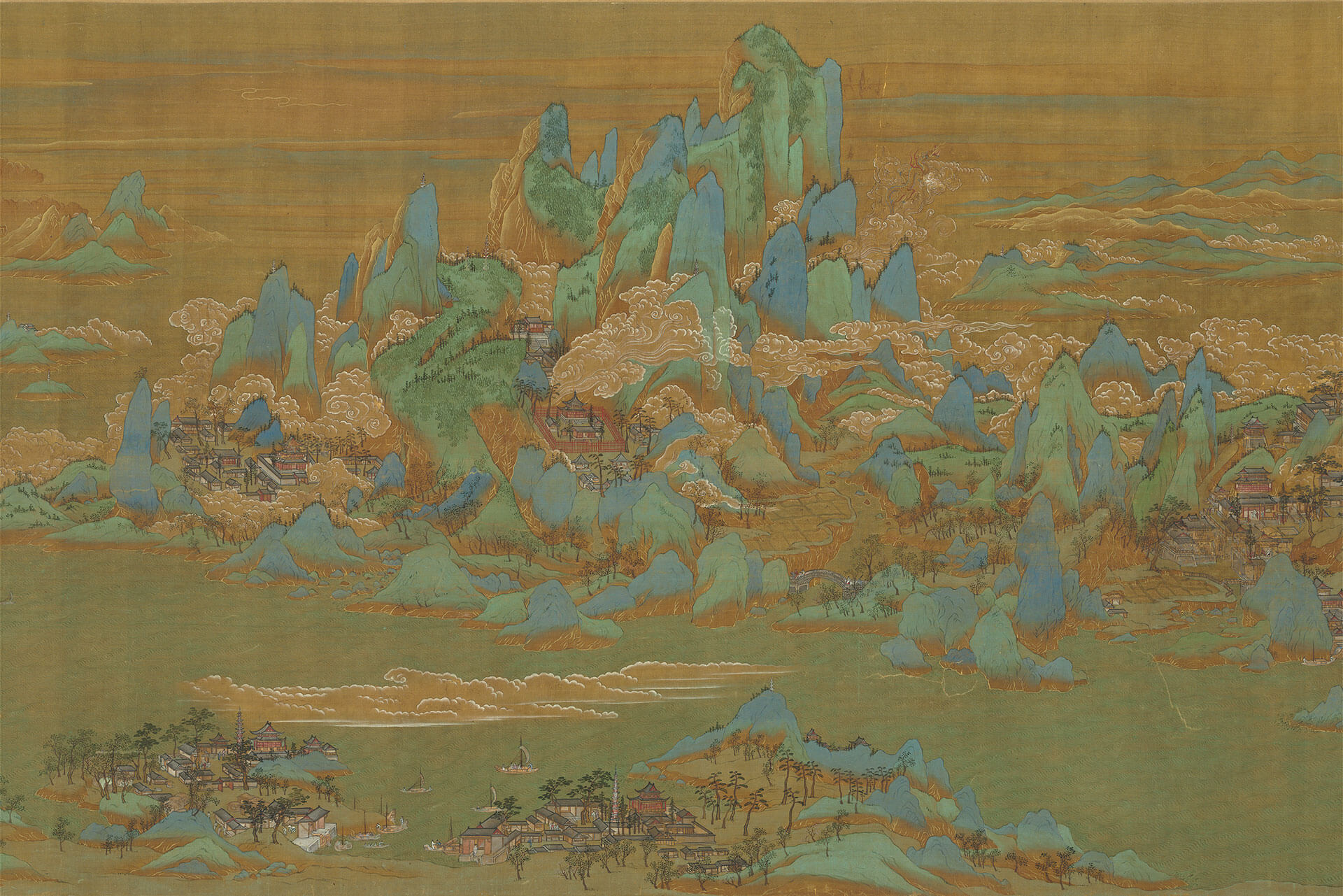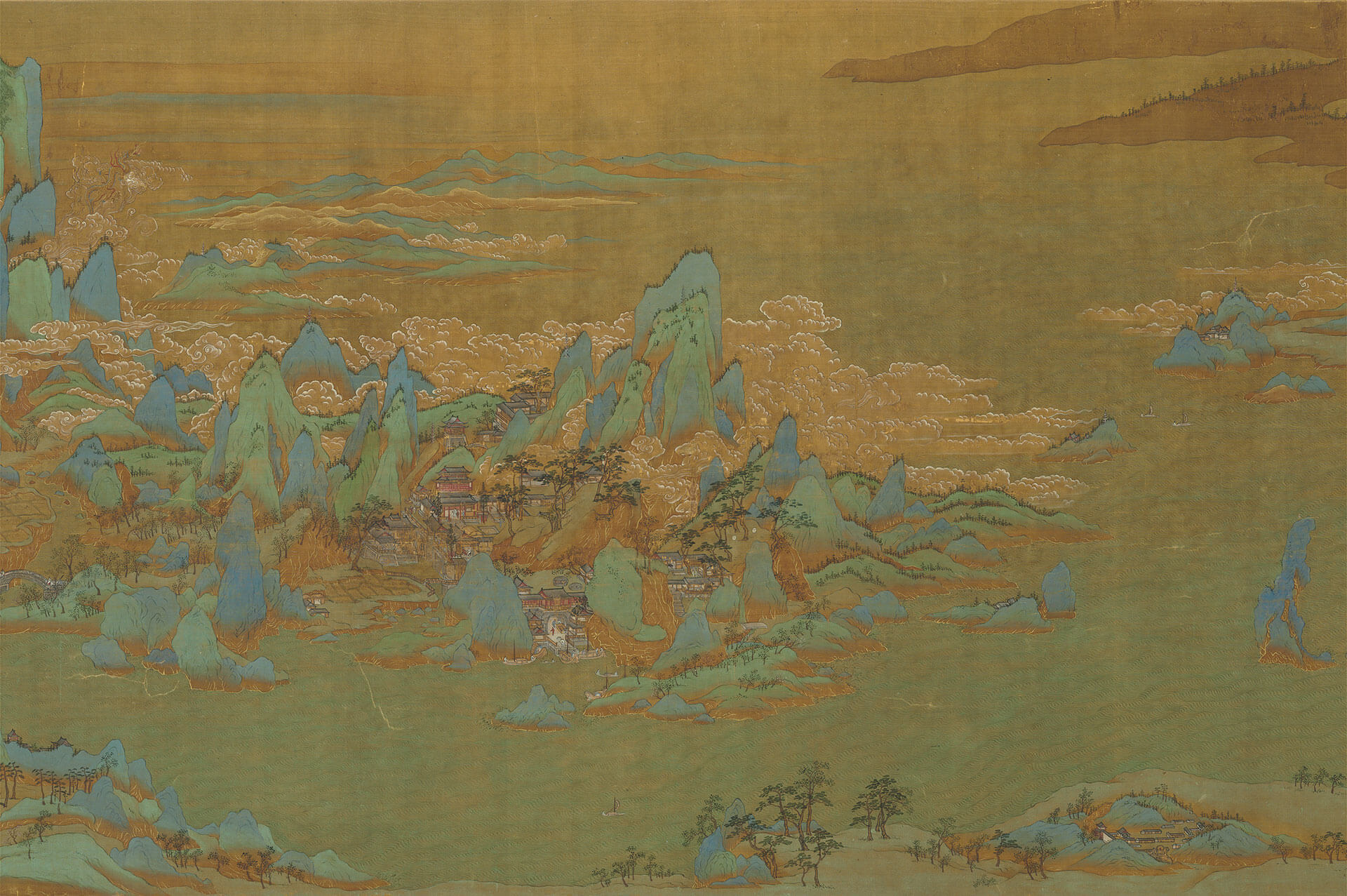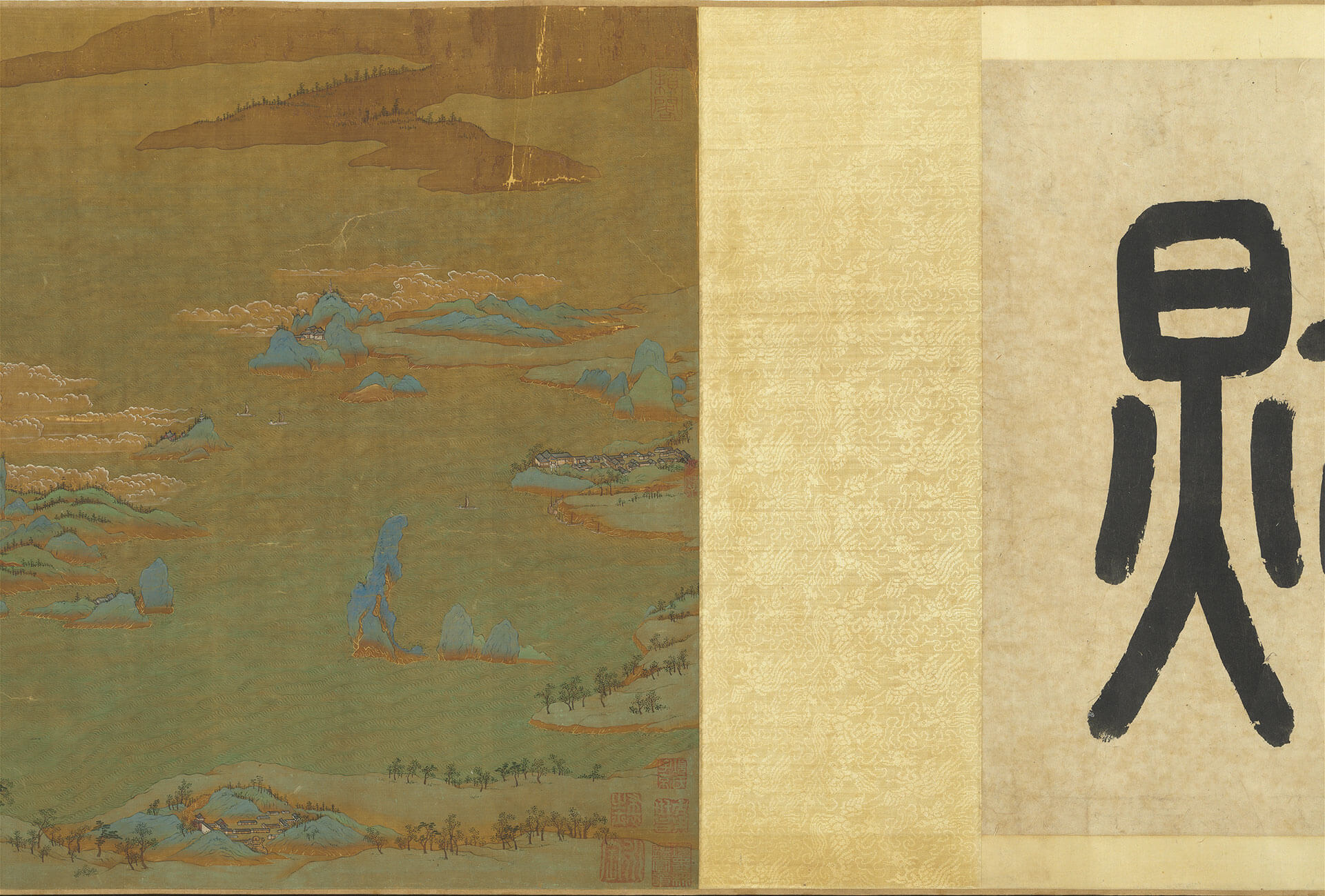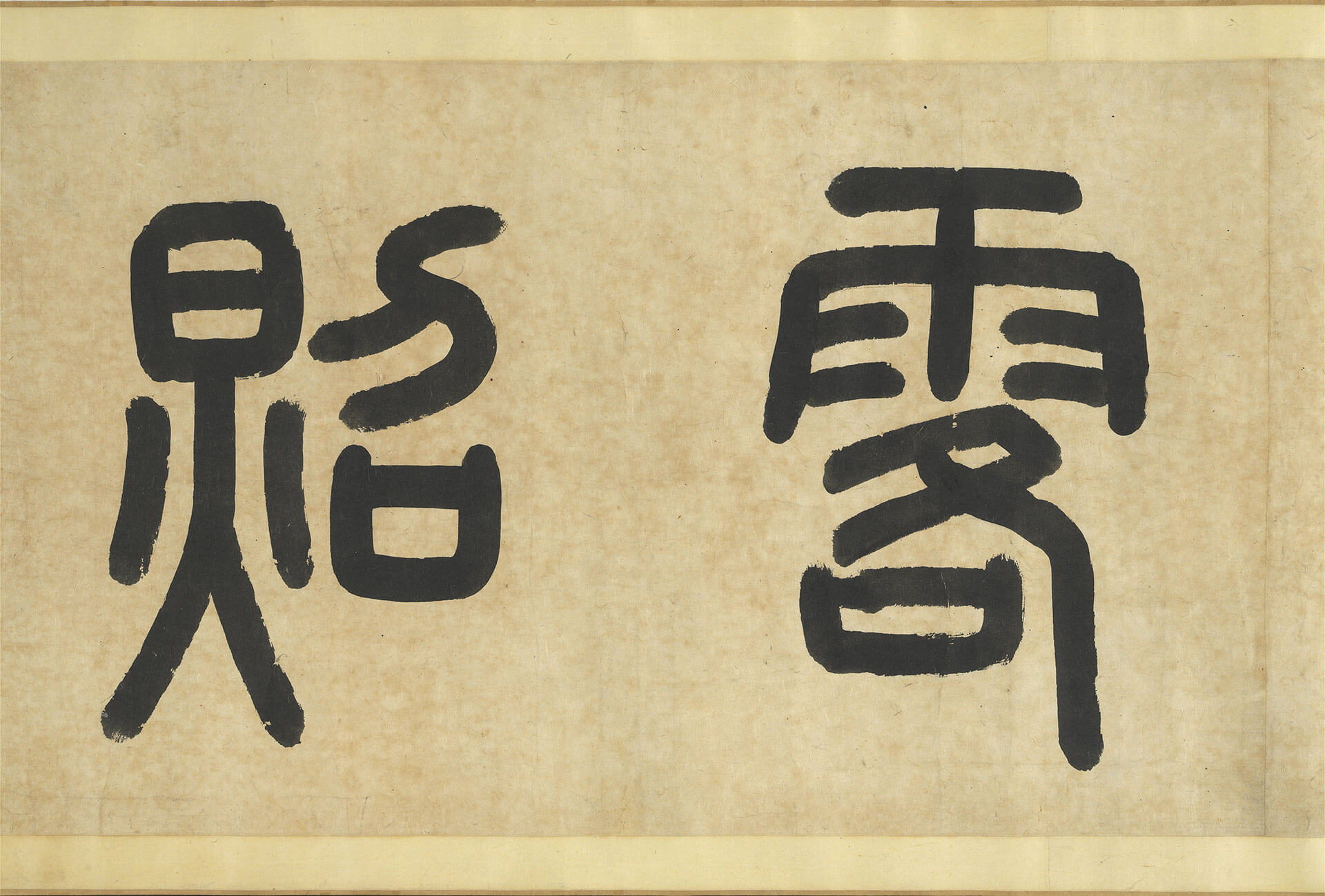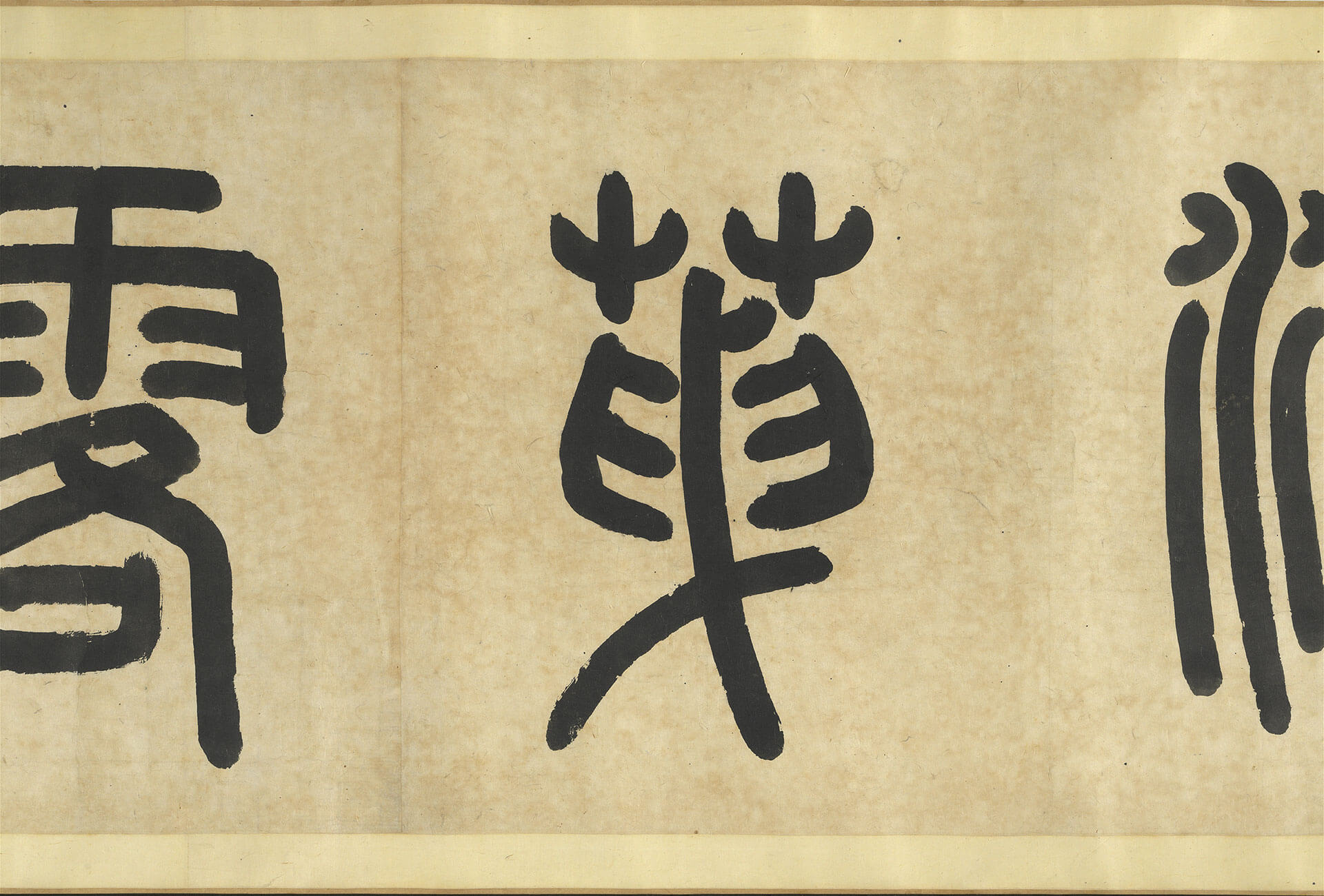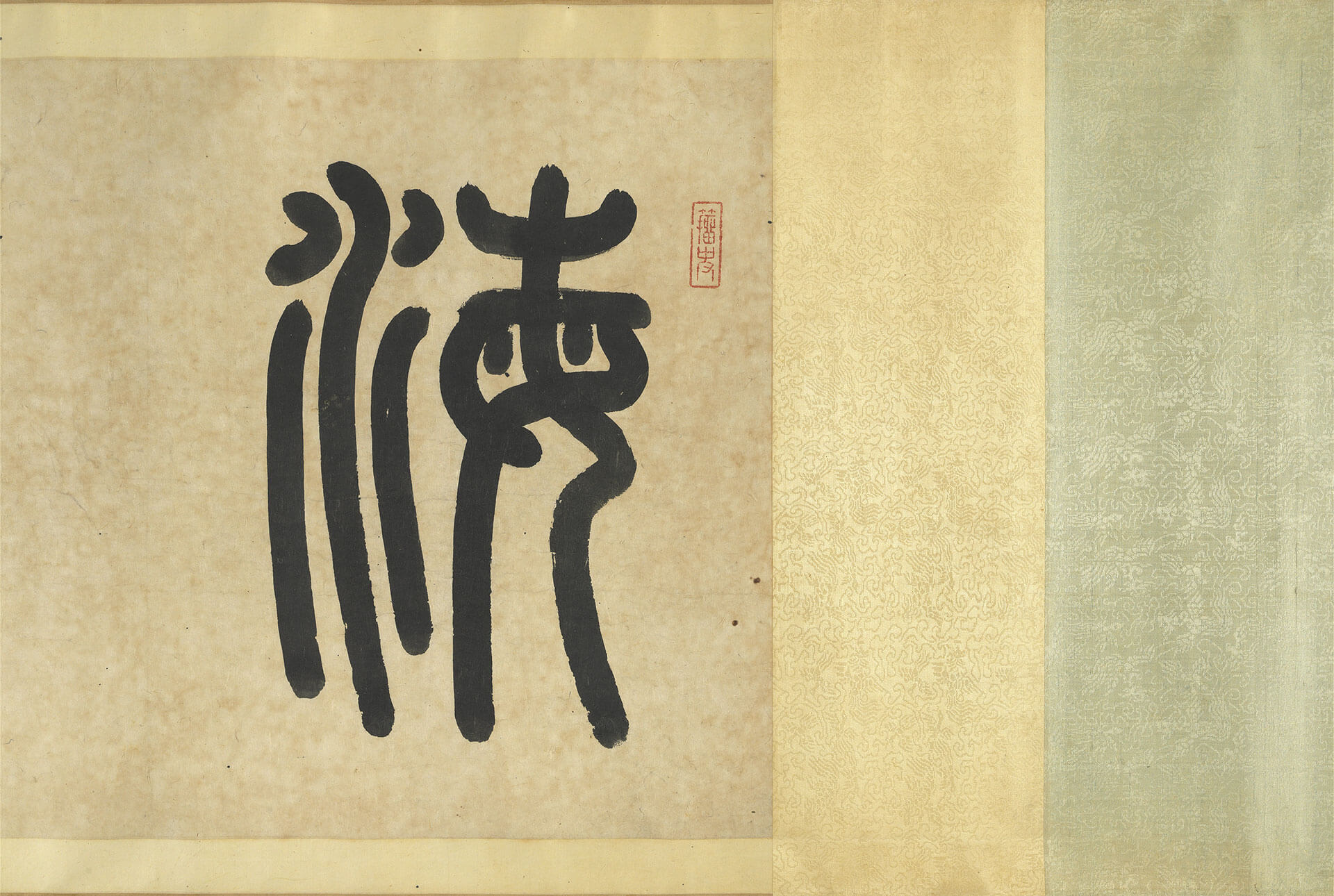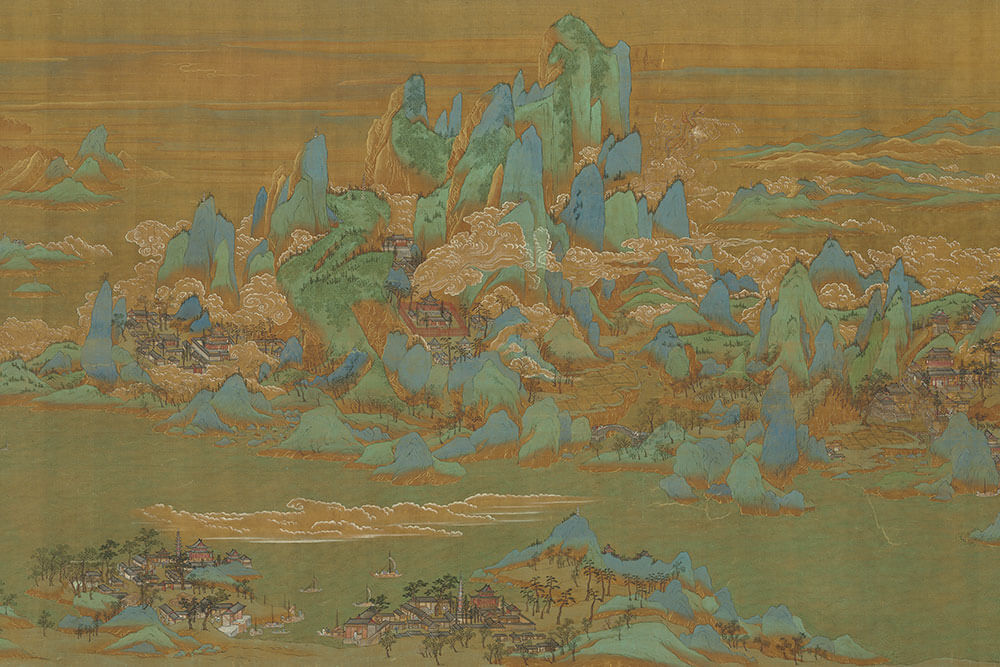Rising Competitions in Social Status and Regional Development
After Wen Zhengming (1470-1559) passed away, Wang Shizhen became the leading connoisseur of the Suzhou region. At that time, quite a few connoisseurs could be found in other areas, such as Xiang Yuanbian (1525-1590) in Jiaxing, Wang Daokun (1525-1593) and Zhan Jingfeng (1528-1602) in Xin'an, and Mo Shilong (1537-1587) in Songjiang, who were all wealthy individuals either of local gentry or commoner status. From different social groups and regions, and with varying levels of wealth and connoisseurial skills at their disposal, they challenged the authority that Suzhou had established in the arts and connoisseurship. This section of the exhibit specifically deals with collectors distributed in the Jiangnan area at the time and the depth of their collections, also testifying to the contention that arose between them and Wang Shizhen. From the early Qing dynasty, for example, is a record that he led a group of Suzhou elites on a cultural trip to Huizhou, where several cultural competitions with talents of the area were held. Regardless of whether such grand literary gatherings actually took place, the rumor itself clearly relates to the competition between Suzhou literati and Huizhou merchants. So what happened in the story? The Huizhou talents, receiving the approval of Wang Shizhen, seem to have won, the result still confirming that he was the leader of art circles and the authority and arbiter of refined taste in his day.
Jade cicada
- Inscribed by Xiang Yuanbian (1525-1590) Western Han dynasty (206 BCE- 8 CE)
- Exhibition time I. 10.5(Wed.)-12.25(Sun.)
- Exhibition time II. 12.28(Wed.)-3.21(Tue.)
This jade cicada from the Han dynasty was a funeral piece to place inside the mouth of deceased nobles, praying for reincarnation and rebirth; the function later changed with the drilled hole attached with a string. The front and the back have engraved inscriptions that read, 'The authentic piece of Zhanjin longbao modelbook by the youjun General Wang Xizhi of the Jin dynasty, with inscription by Jin Zhangzong. appraised by the Molin Shanren, Xiang Yuanbian in the Ming dynasty.' From the Calligraphy Modelbook of Sanxi Hall collected by the NPM, the 'Zhanjin longbao modelbook' by Wang Xizhi has the inscription written by Ouyang Xuan in 1357; the statement mentioned that the label in the slender-gold style was a copy of Xuanhe calligraphy by Jin Zhangzong (1189-1208). Xiang Yuanbian (1525-1590) originated from Jiaxing, and Xiang was a renowned collector in the late Ming dynasty. The modelbook also has the connoisseurship mark of Xiang, which indicates the connection between the inscriptions on the cicada and the calligraphy collection in the Ming period.
Xi-stone inkstone with treasure-inlaid box
- Box with mark of Zhou Zhu
- Ming dynasty (1368-1644)
- Exhibition time I. 10.5(Wed.)-12.25(Sun.)
- Exhibition time II. 12.28(Wed.)-3.21(Tue.)
The round inkstone has the pool circling the hill, copying the style of the biyong inkstone. used xi stone from Anhui and the stone has a refined texture ideal for ink grinding. This exhibit was a late Ming production copying ancient works. The wooden box has polychrome flower-and-bird decoration inlaid with the mother-of-pearl shell, tinted lacquer, wood, bone and horn pieces. The pattern depicts a magpie resting on the plum branch and blossoming camellia beneath the tree. The square mark of 'wumen zhouzhu' inlaid with silver sits on the bottom. The trend in the late Ming that applied coloured gems, corals, ivories, pearl shells and lacquered woods to form an inlaid decoration was called the 'baibao (treasure inlaid)' technique. The master of this technique during the Jiajing and Wanli reign was from the Zhou family. The Gubugu lu by Wang Shizhen mentioned the name Zhou Zhi; however, the Reminiscence of Tao Hut by Zhang Dai named the craftsman Zhou Zhu and praised him as the 'excellence of Wuzhong'.
Timely Clearing After Snowfall
- Wang Xizhi (303-361), Jin dynasty
- National Treasure
- 2.8-3.21(restricted)
According to a colophon for this work, an art seller surnamed Lu sold it to Wang Zhideng (1535-1614), and later it entered the collection of Liu Chengxi (?-1662). After Wang Shizhen's father (Wang Shu) was executed, Xu Jie (1503-1583) and Liu Chan (1504-1563) with his son Liu Shou helped in having Wang's official rank and title posthumously restored. The Wang and Liu families enjoyed a close relationship, and Liu Chengxi was also responsible for the first printing of the novel Plum in the Golden Vase (Jin Ping Mei), further suggesting the special relationship between him and Wang Shizhen.
"Timely Clearing After Snowfall" was written as a letter by Wang Xizhi. The original no longer survives, but this close copy made in the Tang dynasty became a precious model-book of calligraphy. It was one of the "Three Rarities" of calligraphy in the collection of the Qianlong emperor (1711-1799), giving it not only great art historical, but cultural and historical importance as well.
Residents on the Outskirts of the Capital
- Dong Yuan (?- ca. 962), Southern Tang state of the Five Dynasties period
- National Treasure
- 10.5-11.15(restricted)
Dong Yuan (?-ca. 962) specialized in painting the landscapes of the south, and had a great impact on later literati painting. His work mostly adopts a bird's-eye perspective, with "hemp-fiber" texture strokes and slanted-brush moss dots to vigorously portray the cascading mountains and lush green trees.
Dong Qichang (1555-1636) reviewed it as the authentic work of Dong Yuan; from the postscript, we can see that Dong Qichang acquired this painting in 1597 from Pan Yunkui, the third son of Pan Yunduan (1526-1601) and also son-in-law of the Songjiang connoisseur Mo Shilong (1537-1587). In addition to collecting famous Song and Yuan masterpieces, Mo also coined the term of the style of Northern and Southern Song landscapes. This work should be a collection passed down from Mo after his passing, and it can also prove that the Songjiang School harbored high respect and attached great importance to the work of Dong Yuan.
Autumn Colors on the Qiao and Hua Mountains
- Zhao Mengfu (1254-1322), Yuan dynasty
- National Treasure
- 10.5-11.15(restricted)
Wang Shizhen and Xiang Yuanbian (1525-1590) were both proficient in the appreciation of calligraphy and painting, and they oftentimes disagreed with each other. Shen Defu (1578-1642) dubbed Wang as a scholar with "a great taste in appreciation" and "a pair of eagle's eyes" in Unofficial Records of the Wanli Period. Wang considered Xiang's taste in appreciation substandard, and said Xiang could only use money to "capture" famous paintings and calligraphy works. As for Xiang, he once told Zhan Jingfeng (1532-1602) that Wang and his brother were practically blind men, that only Wen Zhengming (1470-1559), who had passed away for a long time, had great taste, and that only Zhan and himself were the true expert collectors at that time.
This work was painted by Zhao Mengfu for Zhou Mi (1232-1298) in 1295. The first section depicts the Hua(buzhu) Mountain and the end section depicts the Qiao Mountain, with vast expanses of water in between, forming a wide, open view dotted with huts and fishermen in a tranquil atmosphere.
Imitating Li Sixun's "Evening Glow on Seas and Skies"
- Qiu Ying (ca. 1494-1552), Ming dynasty
- Exhibition time II. 12.28(Wed.)-3.21(Tue.)
The landscape accentuated by the blue and green colour gleams under the lights of the dusk, portraying a scene of the spiritual realm. The postscripts by Wu Kuan (1435-1504) and Wen Zhengming (1470-1559) at the end of the scroll stated that this piece was a copy of Li Zhaodao's artwork by Qiu Ying (ca. 1494-1552), commissioned by Xian Yuanbian (1525-1590). At the time when Wu Kuan passed away, Qiu was in his teens, and Xian was yet to be born. Hence this piece and the inscription are both fakes. Wang Shizhen documented that Yan Shifan (1513-1565) had burgled a scroll of 'Glowing Clouds amidst Ocean and Sky' by Li Zhaodao from the Tang family in Wu town with the help of an official procurator. The Tang family had allowed Qiu Ying to make a copy and later sold it to Wang Shizhen. Numerous copies under this category of blue-and-green landscapes had circulated in the market at that period, and this exhibit might serve as a reference to imagine similar works collected by Wang Shizhen.


